Historic site

Tourism Sites
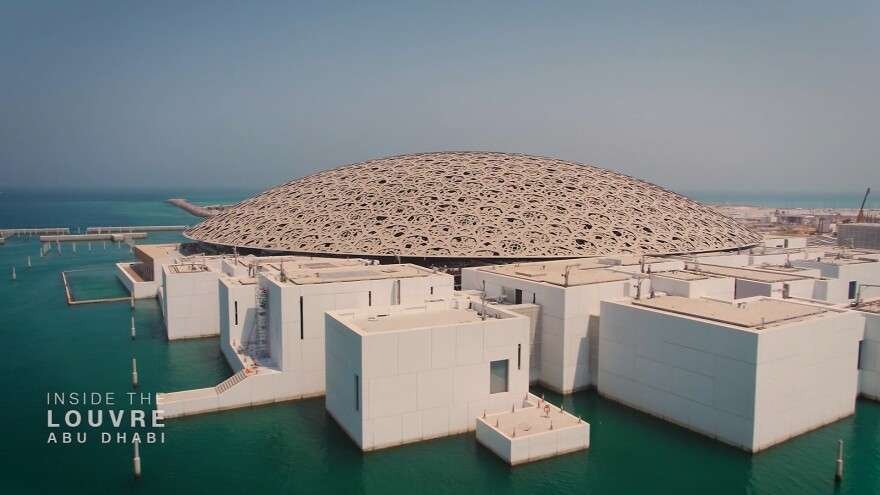
Abu Dhabi
🧠 Fact: UAE’s capital is home to the stunning Sheikh Zayed Grand Mosque.
💡 Tip: Visit the mosque in the late afternoon for soft lighting and fewer crowds.
Info: Abu Dhabi, the capital of the United Arab Emirates, blends rich cultural heritage with modern sophistication. Home to landmarks like the Sheikh Zayed Grand Mosque, Louvre Abu Dhabi, and Qasr Al Watan, the city showcases Islamic architecture and world-class art. Its Corniche offers scenic waterfront views, while Yas Island features attractions like Ferrari World and Yas Marina Circuit. With luxurious resorts, desert adventures, and a thriving culinary scene, Abu Dhabi offers a diverse and enriching experience for all visitors.
- 📍 United Arab Emirates, Abu Dhabi
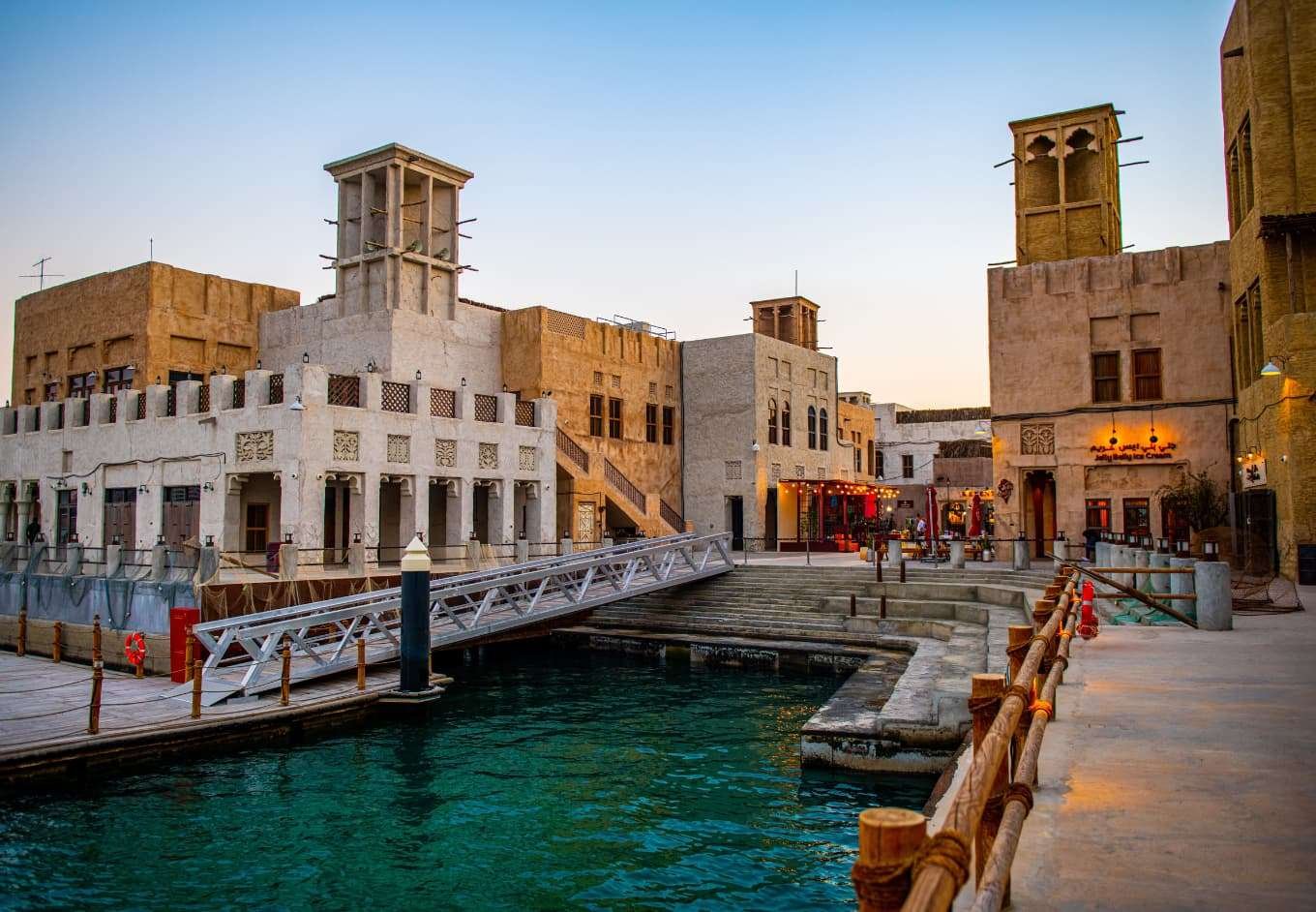
Al Fahidi Historical Neighbourhood
🧠 Fact: Step into Old Dubai’s maze of wind towers and museums.
💡 Tip: Drop by Arabian Tea House for a mint lemonade break.
Info: Al Fahidi Historical Neighbourhood, also known as Al Bastakiya, is one of Dubai’s oldest heritage sites, offering a glimpse into life before the city’s modern transformation. Located along Dubai Creek, it features narrow lanes, traditional wind-tower architecture, and restored buildings housing art galleries, museums, and cultural centers. Visitors can explore the Dubai Museum, Sheikh Mohammed Centre for Cultural Understanding, and enjoy authentic Emirati experiences. Al Fahidi is a peaceful, atmospheric district that showcases Dubai’s rich cultural and architectural history.
- 📍United Arab Emirates, Al Fahidi Historical Neighbourhood
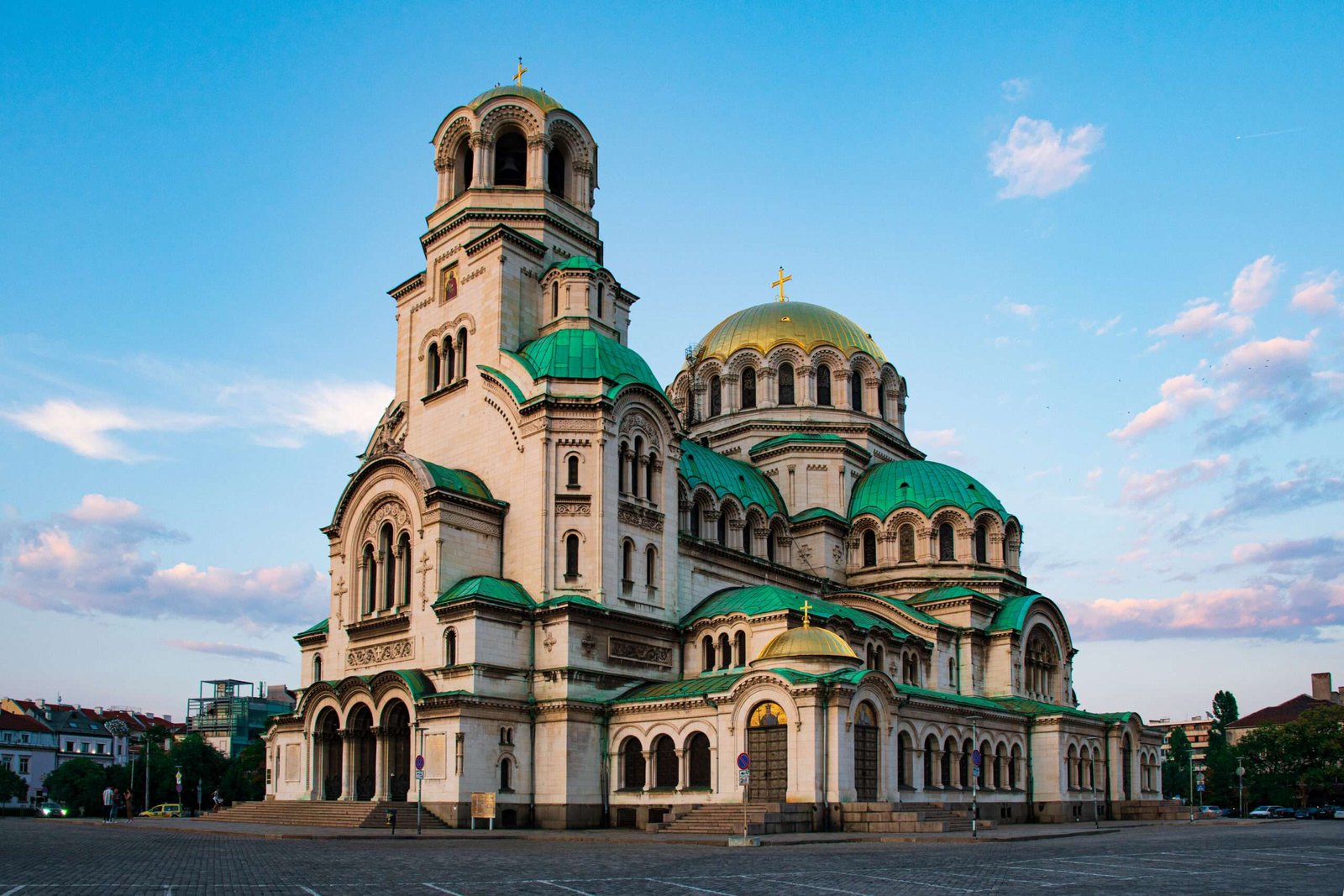
Alexander Nevsky Cathedral
🧠 Fact: One of the largest Orthodox cathedrals in the Balkans and a symbol of Sofia.
💡 Tip: Visit early in the morning for a peaceful experience before tour groups arrive.
Info - Dominating the skyline of Sofia, Alexander Nevsky Cathedral is one of Bulgaria’s most iconic landmarks. Completed in 1912, this grand Orthodox church honors Russian soldiers who died in the Russo-Turkish War of 1877-78. Its neo-Byzantine architecture, impressive golden domes, and marble-clad interiors make it a must-see. Inside, visitors can admire beautiful mosaics, frescoes, and a crypt housing a rich collection of Orthodox icons. The cathedral sits at the heart of the city and is a symbol of Bulgarian resilience and faith, offering both architectural grandeur and a serene space for reflection amid bustling Sofia.
- 📍 Bulgaria , Sofia
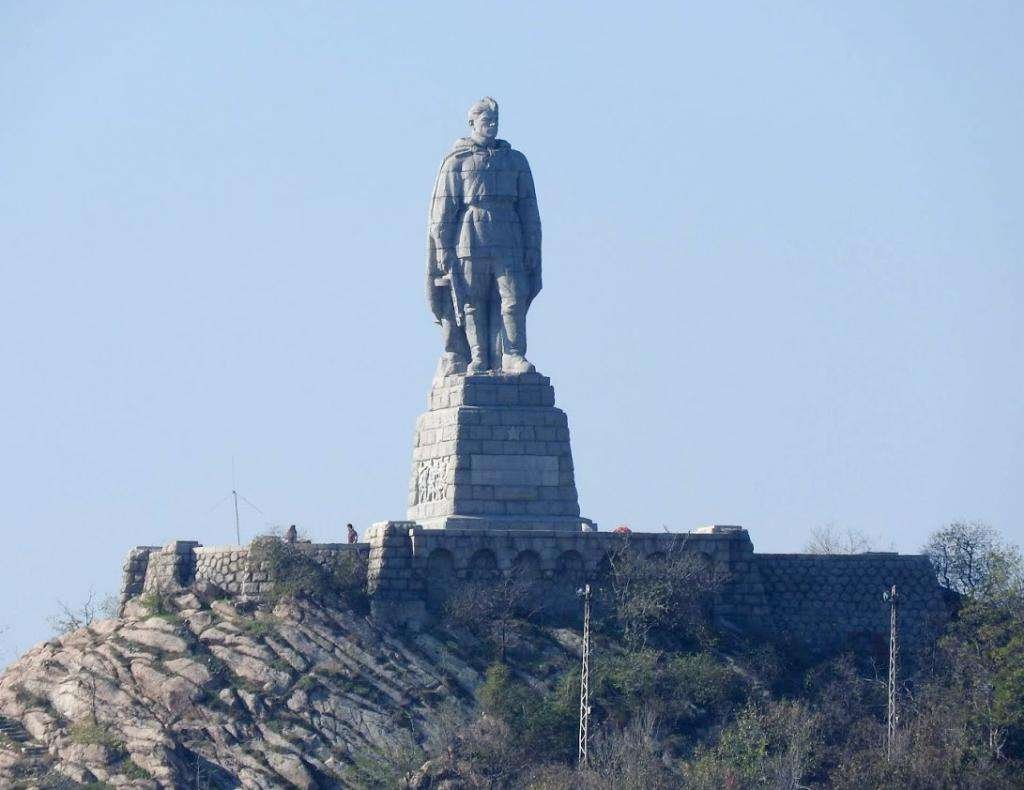
Alyosha Monument & Hill of the Liberators
🧠 Fact: : A Soviet soldier monument offering panoramic views of Plovdiv.
💡 Tip: Wear comfy shoes — it’s a bit of a climb!
Info - Standing proudly atop Bunardzhik Hill, the Alyosha Monument honors Soviet soldiers who fell during World War II. The 11-meter-tall statue of a soldier gazes solemnly over Plovdiv, a landmark visible from nearly anywhere in the city. The hill, known as the Hill of the Liberators, is a popular spot for walks and sunset views, offering panoramic sights of the city and the distant Rhodope Mountains. Along the pathways, you’ll find historical markers and shaded spots perfect for a break. Despite its complex history, the monument remains an enduring symbol of Plovdiv’s past and resilience.
- 📍 Bulgaria , Plovdiv
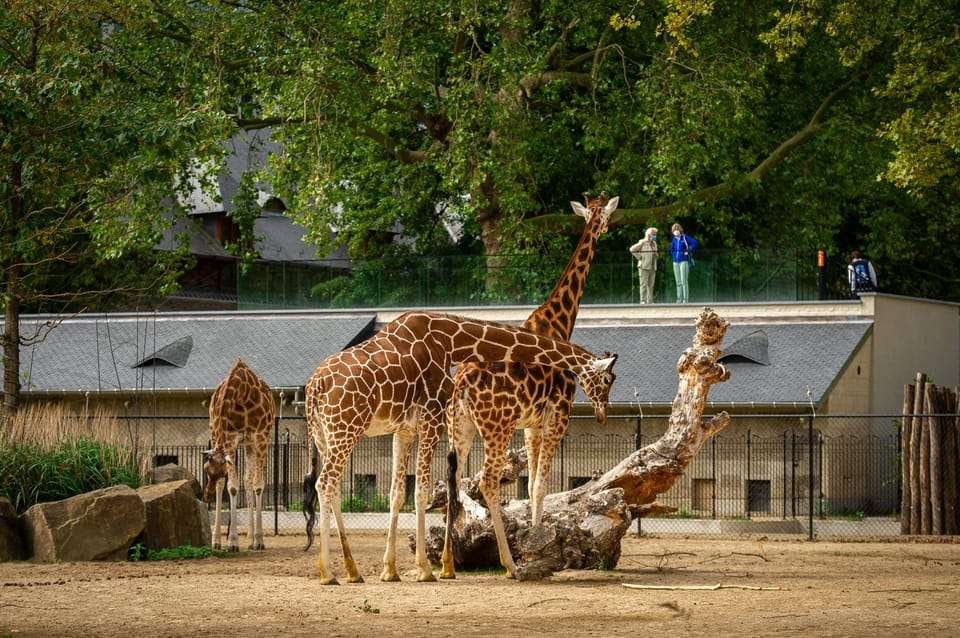
Antwerp Zoo
🧠 Fact: Opened in 1843, it’s one of the oldest zoos in the world, hosting over 7,000 animals.
💡 Tip: Arrive early to catch morning animal feedings and keeper talks.
Info - Established in 1843, Antwerp Zoo is one of the oldest zoos in the world. Located next to the central train station, it’s home to over 7,000 animals from around the globe. With beautifully landscaped gardens and historic 19th-century architecture, the zoo is a relaxing escape in the city, ideal for families and animal lovers alike.
- 📍 Belgium , Antwerp
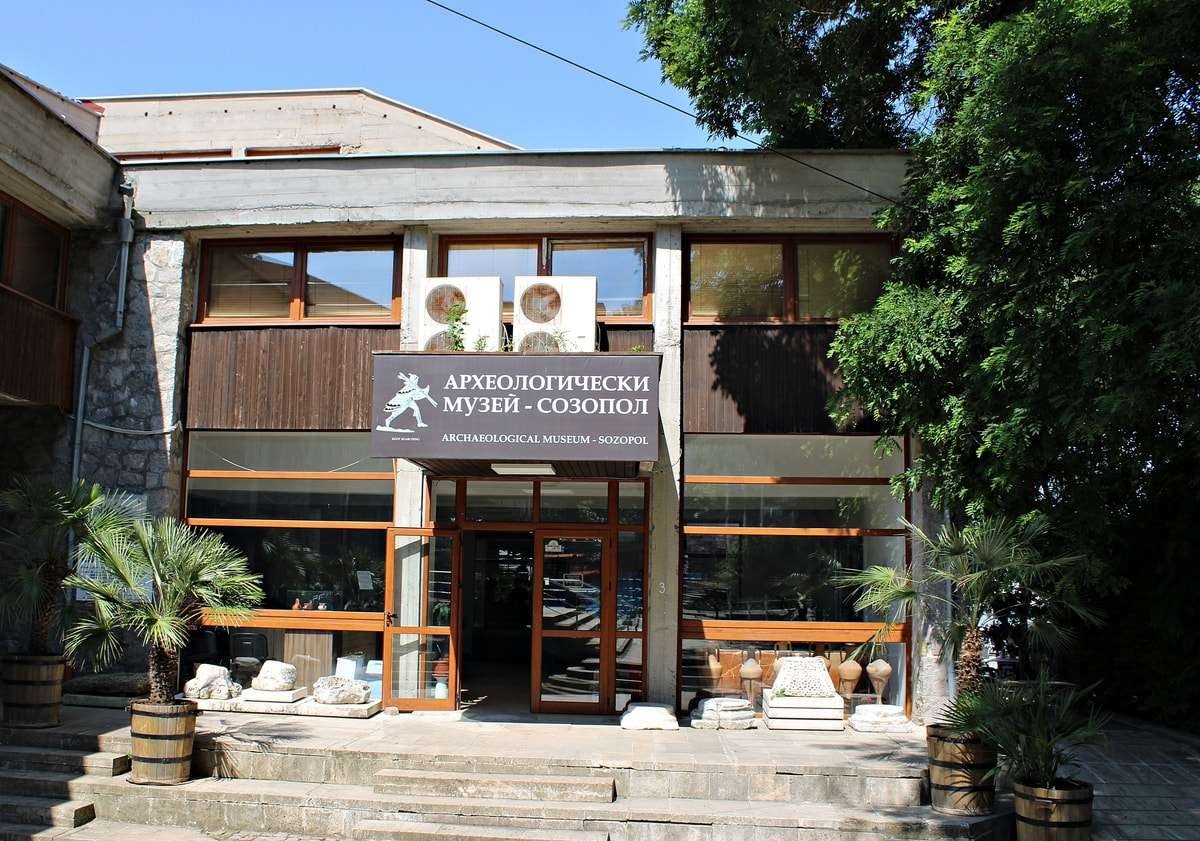
Archaeological Museum Sozopol
🧠 Fact: Displays artifacts from ancient Apollonia, including Thracian and Greek relics.
💡 Tip: Combine with a walking tour of the town’s historical sites.
Info - A must-visit for history enthusiasts, the Archaeological Museum in Sozopol showcases the rich ancient heritage of one of Bulgaria’s oldest coastal towns. Its extensive collection covers artifacts from the Thracian, Greek, and Roman eras, including ceramics, tools, coins, and exquisite icons. The museum’s highlight is the ancient Greek relics from the city’s original founding as Apollonia Pontica in the 7th century BC. Notable exhibits include a statue fragment of Apollo and medieval Christian artifacts. Located in the town’s Old Quarter, the museum provides fascinating insight into Sozopol’s maritime and spiritual past, making it a perfect cultural stop after wandering the cobbled streets.
- 📍 Bulgaria , Sozopol
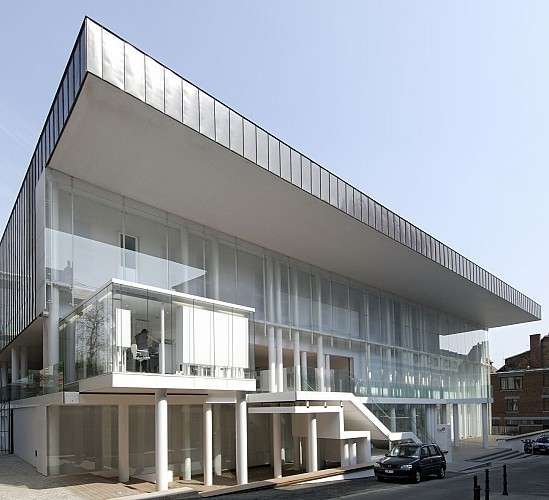
BAM – Beaux-Arts Mons
🧠 Fact: The city's fine arts museum, hosting contemporary art exhibitions and collections
💡 Tip: Check the museum's schedule for temporary exhibitions and events.
Info -BAM, Mons’ leading contemporary art museum, hosts an impressive collection of modern and classic works. The museum regularly curates exhibitions by major international artists alongside local talents. Its sleek, contemporary design contrasts beautifully with the city’s historic surroundings. Visitors appreciate the thought-provoking installations, multimedia exhibits, and well-presented retrospectives. BAM is perfect for art lovers looking to explore Belgium’s contemporary creative scene in a fresh, dynamic space.
- 📍 Belgium , Mons
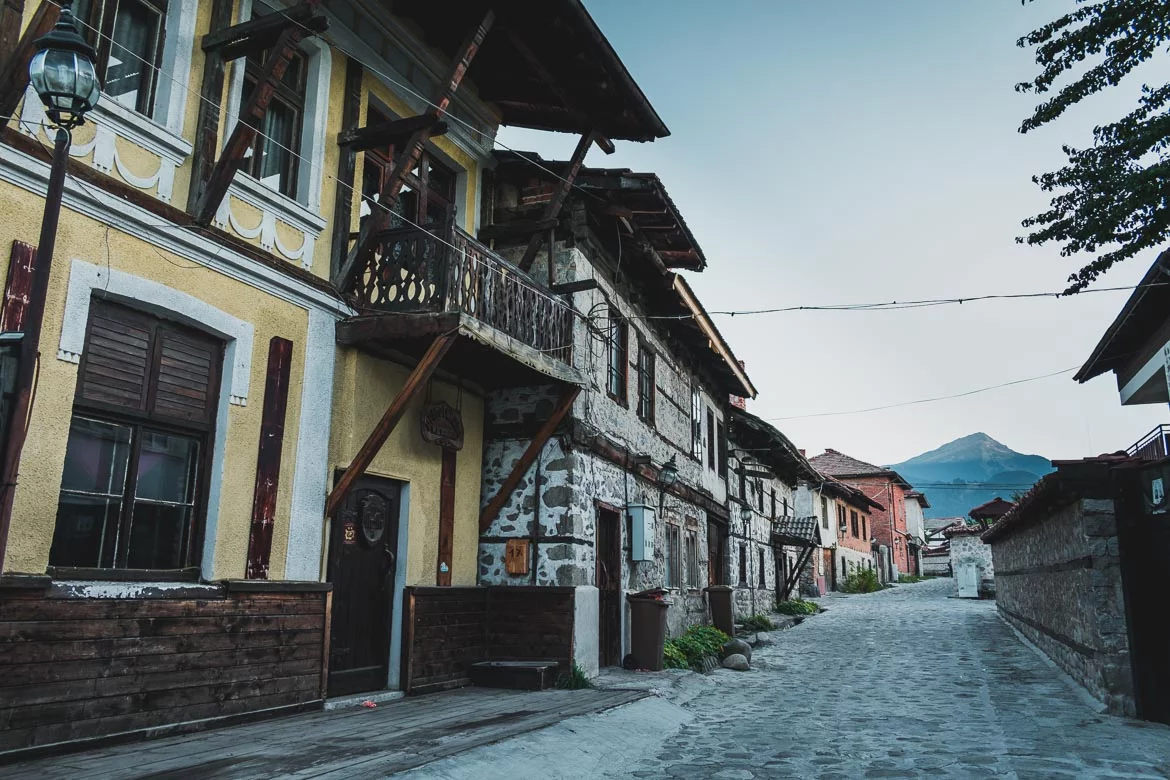
Bansko Old Town
🧠 Fact: Cobbled streets, stone houses, and centuries-old churches await.
💡 Tip: Sample local cuisine in a traditional mehana (tavern).
Info - Bansko Old Town is a beautifully preserved historic quarter offering cobbled streets, stone houses with wooden balconies, and centuries-old landmarks. The area reflects a rich mix of Ottoman, Revival, and alpine architectural influences. Wander its narrow lanes to discover traditional mehanas (taverns), small craft shops, and peaceful courtyards. Highlights include Velyanova House, a historic home-turned-museum showcasing 19th-century murals and furnishings. The town’s charming atmosphere intensifies during winter, when snow dusts its rooftops and festive lights adorn its streets. Bansko Old Town provides a warm, authentic counterpoint to the modern ski resort, giving visitors a real sense of Bulgaria’s heritage.
- 📍 Bulgaria , Bansko
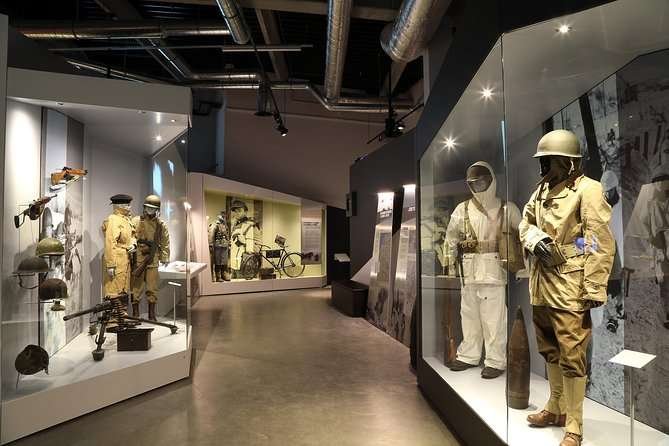
Bastogne War Museum
🧠 Fact: A comprehensive museum focusing on the Battle of the Bulge and World War II history.
💡 Tip: Combine your visit with the nearby Mardasson Memorial for a full historical experience.
Info - A powerful tribute to the Battle of the Bulge and World War II history, the Bastogne War Museum immerses visitors in the conflict through interactive exhibits and personal stories. Life-sized dioramas, audio guides, and original artifacts vividly portray the battle’s human and military impact, with the nearby Mardasson Memorial honoring fallen American soldiers.
- 📍 Belgium , Bastogne
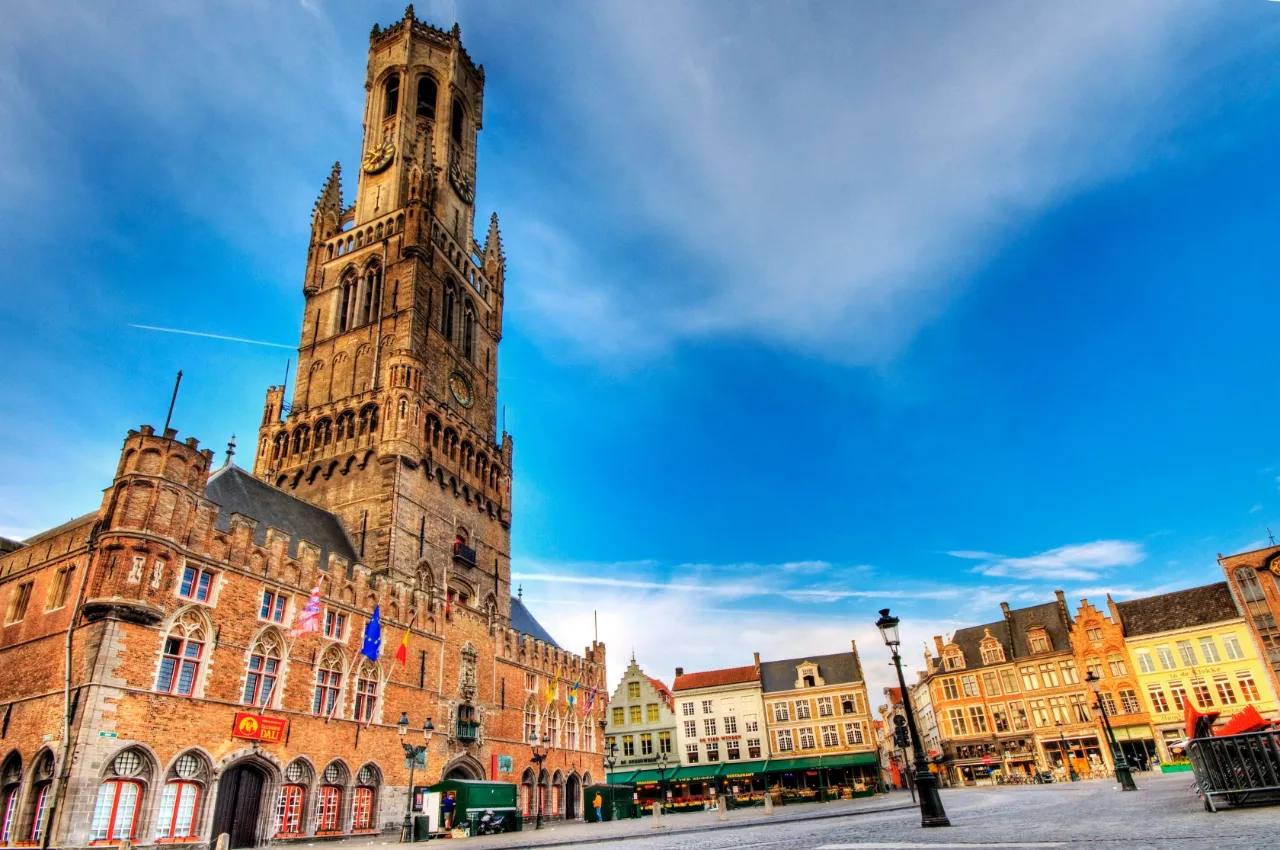
Belfry of Bruges
🧠 Fact: The 83-meter medieval bell tower has 366 steps and offers panoramic city views.
💡 Tip: Go early to avoid the long queues and catch the bells ringing.
Info - The Belfry of Bruges is one of Belgium’s most iconic medieval towers, rising 83 meters above the Markt square. Dating back to the 13th century, it served as a watchtower and treasury for the city’s merchants. Climbing its 366 narrow steps rewards visitors with panoramic views over Bruges' fairytale-like rooftops and canals. Along the way, you can visit the old treasury room and admire the impressive carillon of 47 bells.
- 📍 Belgium , Bruges
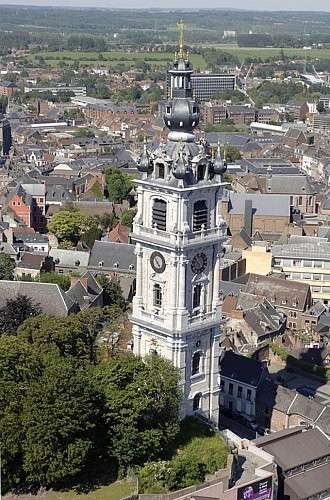
Belfry of Mons (Beffroi de Mons)
🧠 Fact:A UNESCO World Heritage Site and the only Baroque-style belfry in Belgium, offering panoramic views of the city
💡 Tip:Climb to the top for a breathtaking view of Mons and its surroundings.
Info -A UNESCO World Heritage Site, the Belfry of Mons stands proudly on a hilltop, offering panoramic views of the city and surrounding countryside. Built in the 17th century, it’s the only Baroque-style belfry in Belgium. Inside, exhibits detail its history and the importance of belfries in medieval civic life. Visitors can climb to the top for sweeping vistas and to see the original bells. It’s an iconic landmark that beautifully blends history with breathtaking scenery.
- 📍 Belgium , Mons
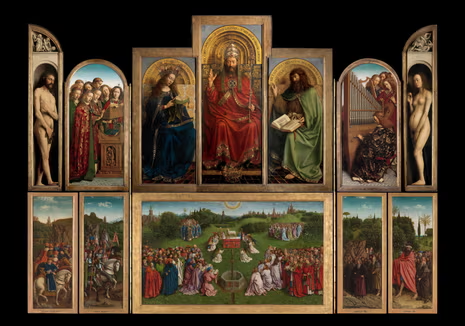
BelgiumSt. Bavo’s Cathedral & The Adoration of the Mystic Lamb
🧠 Fact: Houses the world-famous Van Eyck altarpiece—one of the most stolen artworks in history.
💡 Tip: Reserve a timed ticket in advance for guaranteed viewing.
Info -This Gothic masterpiece is Ghent’s most important religious site, known for housing The Adoration of the Mystic Lamb, one of the world’s most famous and valuable paintings, created by the Van Eyck brothers in 1432. The cathedral’s towering spire, stunning stained glass, and richly decorated chapels make it a must-visit for art, history, and architecture lovers.
- 📍 Belgium , Ghent
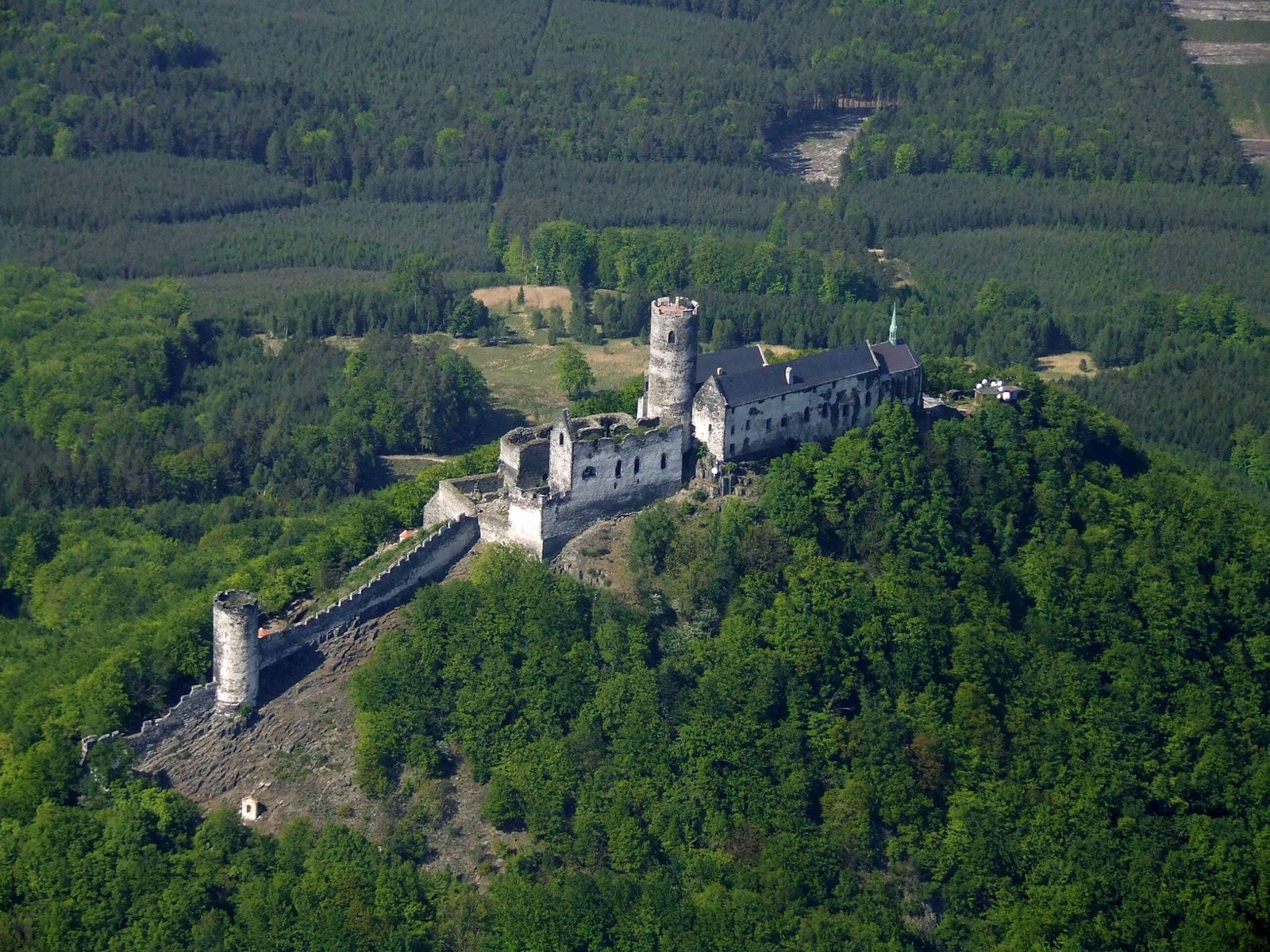
Bezděz Castle
🧠 Fact: A 13th-century Gothic castle founded by King Ottokar II.
💡 Tip: Climb the tower for panoramic views of the surrounding landscape.
Info - Bezděz Castle is one of Bohemia’s most imposing Gothic fortresses, dramatically perched atop a volcanic hill. Built in the 13th century by King Přemysl Otakar II, it has retained much of its medieval character. The castle’s dominant tower offers panoramic views of the surrounding countryside and Mácha’s Lake. Visitors can explore its vaulted Gothic chapel, royal chambers, and echoing corridors. Bezděz inspired famous Czech poets and artists, earning it the nickname “The King of Castles.” Its untamed, romantic atmosphere and sweeping vistas make it a favorite for history buffs and hikers alike.
- 📍 Czech Republic, Bezděz
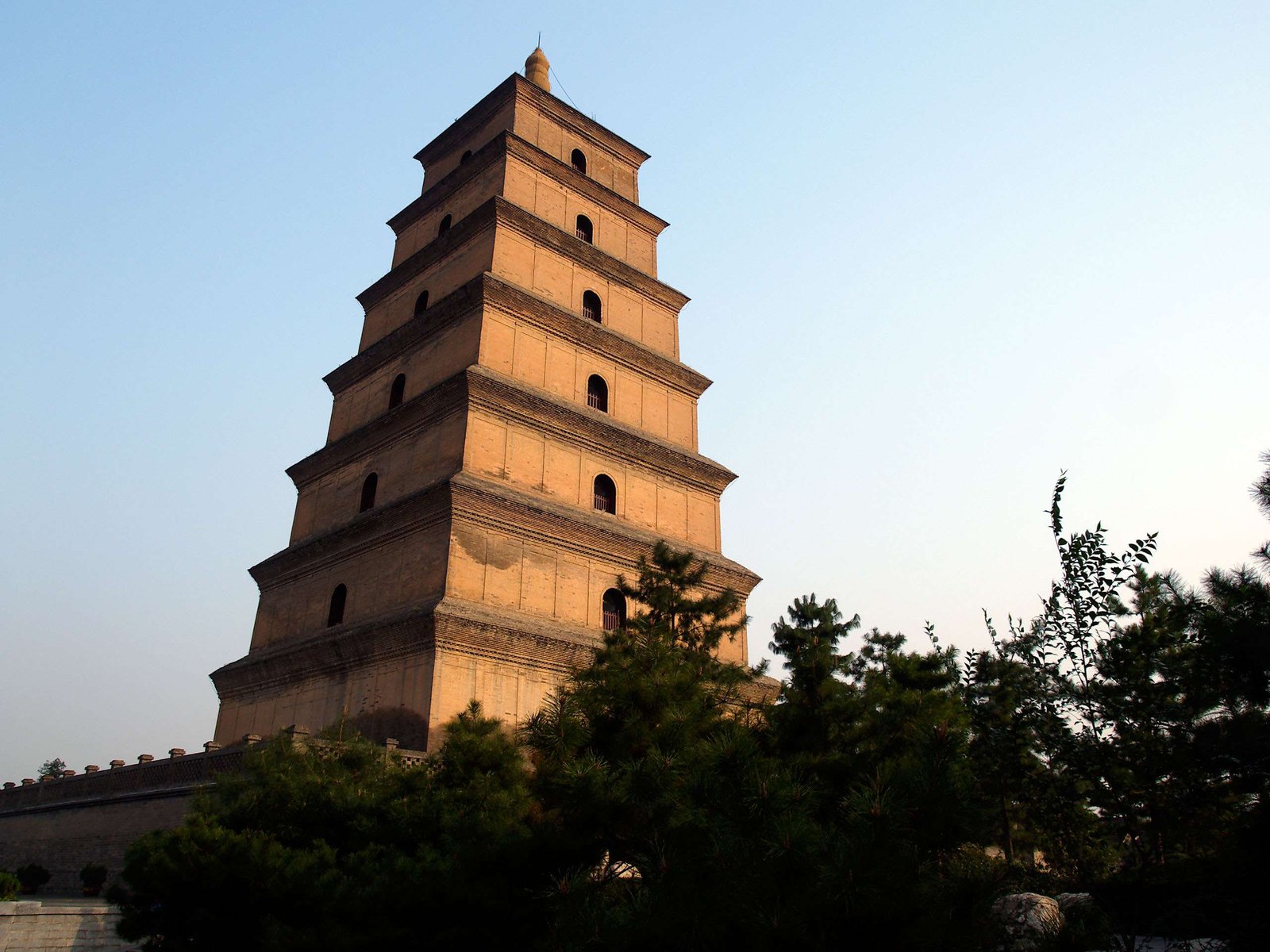
Big Wild Goose Pagoda
🧠 Fact: A Buddhist pagoda built during the Tang Dynasty to store scriptures.
💡 Tip: Visit at night to enjoy the musical fountain show nearby.
Info - Built in 652 AD during the Tang Dynasty, the Big Wild Goose Pagoda is one of Xi’an’s most celebrated landmarks. Originally constructed to house sacred Buddhist scriptures brought from India by monk Xuanzang, the seven-story pagoda stands 64 meters tall. The surrounding Da Ci’en Temple complex offers peaceful courtyards, ancient halls, and a tranquil garden. Visitors can climb the pagoda’s narrow staircase for panoramic city views. At night, the nearby musical fountain show is a popular attraction. The pagoda embodies Xi’an’s Buddhist heritage and its historic role as a cultural and religious crossroads during the Silk Road era.
- 📍 China, Xi’an, Shaanxi Province
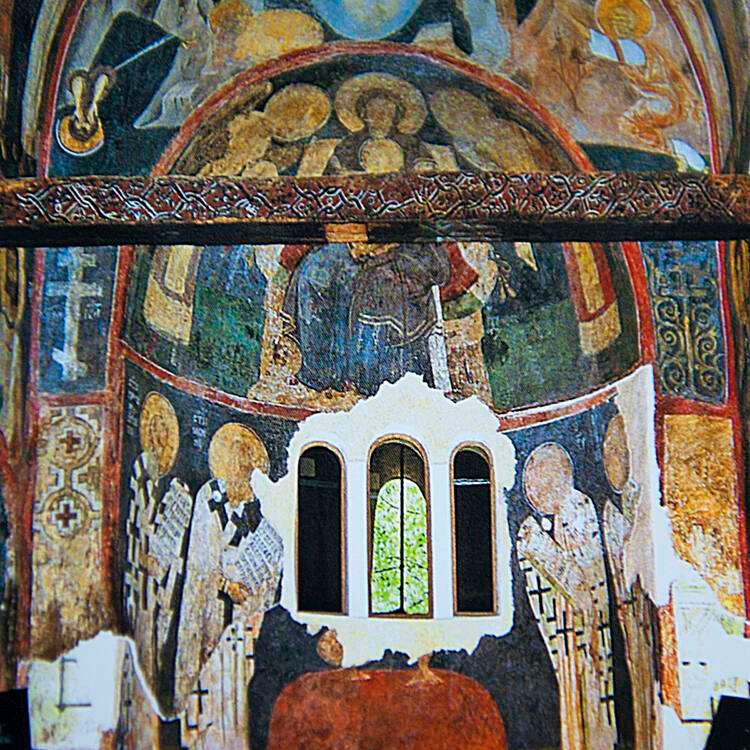
Boyana Church
🧠 Fact: This UNESCO site features frescoes from the 13th century that predate the Renaissance.
💡 Tip: Limited entry per day — go early or book ahead.
Info - A UNESCO World Heritage Site, Boyana Church is a medieval gem nestled at the foot of Vitosha Mountain. Dating back to the 10th century, the church is famed for its remarkable 13th-century frescoes, considered precursors to the European Renaissance. These vivid wall paintings depict biblical scenes, saints, and historical figures in lifelike detail. Despite its modest exterior, Boyana’s art treasures make it one of Bulgaria’s most significant cultural landmarks. Set within a quiet, wooded area, the church offers a serene atmosphere and a fascinating glimpse into medieval Bulgarian religious art and history.
- 📍 Bulgaria , Sofia
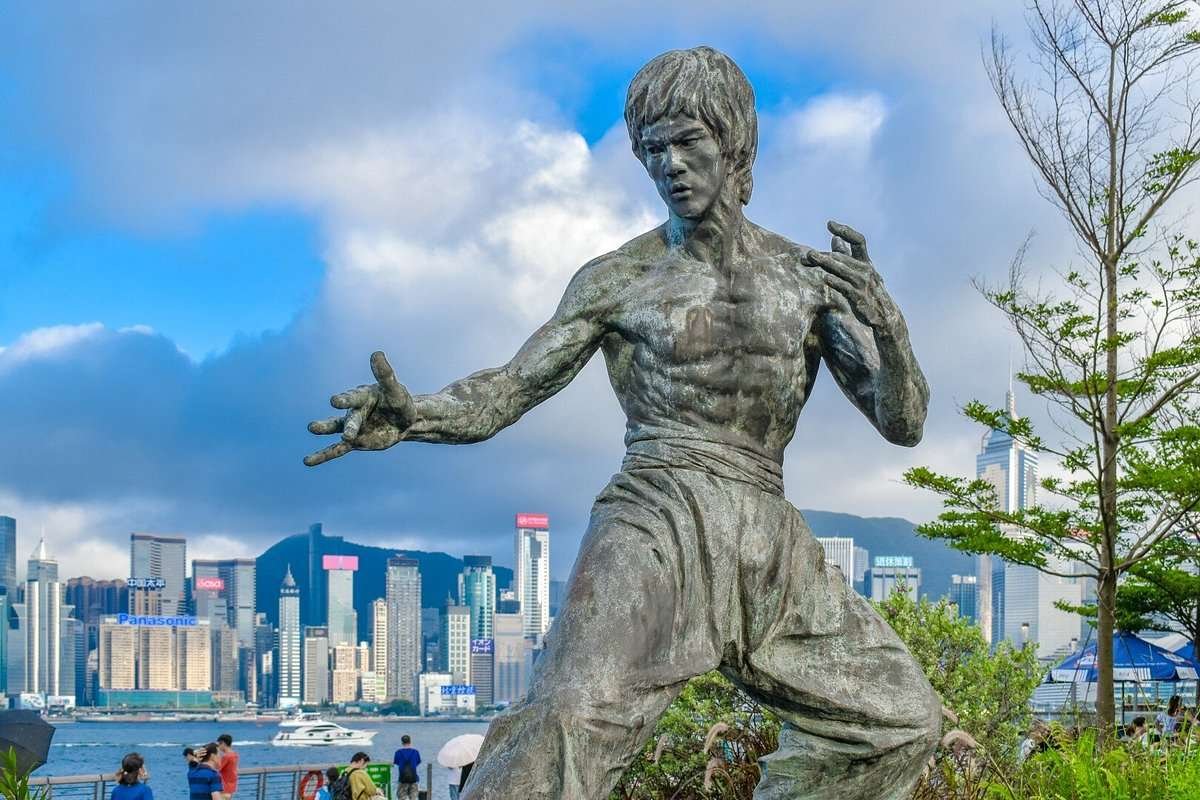
Bruce Lee Statue
🧠 Fact: The 2.5-meter bronze statue of Bruce Lee, sculpted by Cao Chong-en, captures the martial arts legend in his iconic pose from the 1972 film "Fist of Fury.
💡 Tip: Combine your visit with a stroll along the Avenue of Stars for a comprehensive cinematic experience.
Info - The Bruce Lee Statue is a powerful tribute to the martial arts icon and cultural legend. Located on the Avenue of Stars in Tsim Sha Tsui, the statue captures Lee in his classic fighting pose, a symbol of Hong Kong pride and global influence. Erected in 2005, it draws fans from around the world who admire his impact on film and martial arts. Surrounded by harbor views and other cinematic tributes, it’s a must-see for film buffs and pop culture lovers, offering a moment to honor a legend whose legacy transcends generations.
- 📍 China, Hong Kong
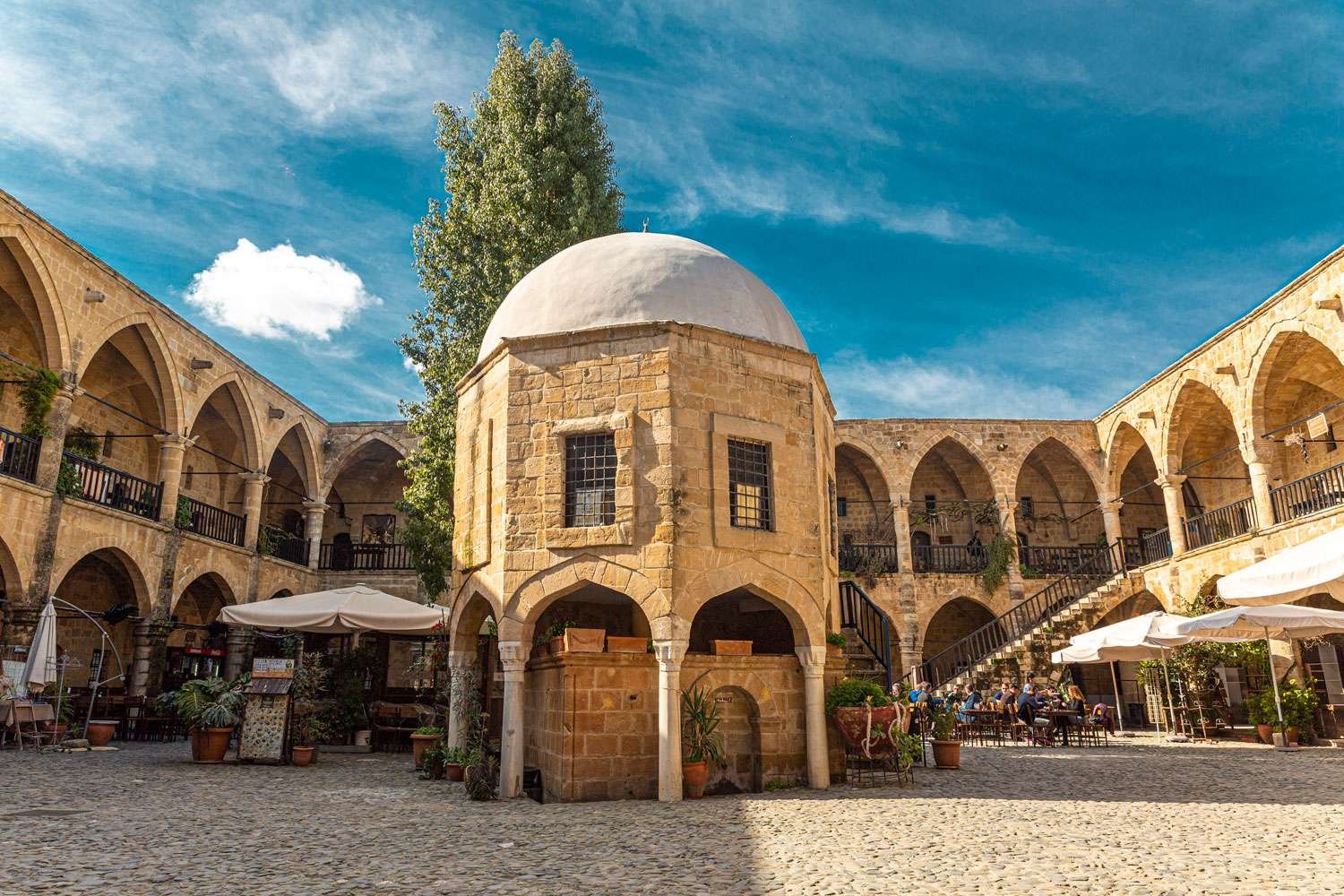
Buyuk Han
🧠 Fact: Built in 1572, it's a stunning Ottoman caravanserai.💡 Tip: Try Turkish coffee in the courtyard.
Info - Nestled within the walled city of Nicosia in Northern Cyprus, Buyuk Han is the island’s most impressive example of Ottoman-era architecture. Built in 1572, this historic caravanserai once hosted traders and travelers. Today, its two-story courtyard surrounds a charming central mosque and fountain, while its former rooms have been transformed into artisan workshops, craft boutiques, and cozy cafés. It’s a peaceful, atmospheric place to explore local pottery, lace, and souvenirs. Buyuk Han beautifully preserves the island’s layered history, offering a serene retreat from Nicosia’s bustling streets and a fascinating glimpse into Cyprus’s Ottoman past.
- 📍 Cyprus, Nicosia
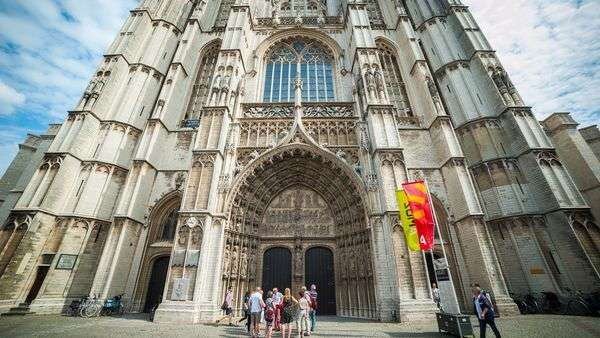
Cathedral of Our Lady (Onze-Lieve-Vrouwekathedraal)
🧠 Fact: This UNESCO-listed Gothic cathedral is home to several of Rubens' masterpieces.
💡 Tip: Get a combo ticket that includes Rubens House for a full artistic experience.
Info - Dominating Antwerp’s skyline, the Cathedral of Our Lady is Belgium’s largest Gothic church and a UNESCO World Heritage Site. Construction began in 1352, and the cathedral houses stunning masterpieces by Baroque artist Peter Paul Rubens. Its soaring spire and intricate stonework make it an architectural marvel and a must-see in the city’s historic heart.
- 📍 Belgium , Antwerp
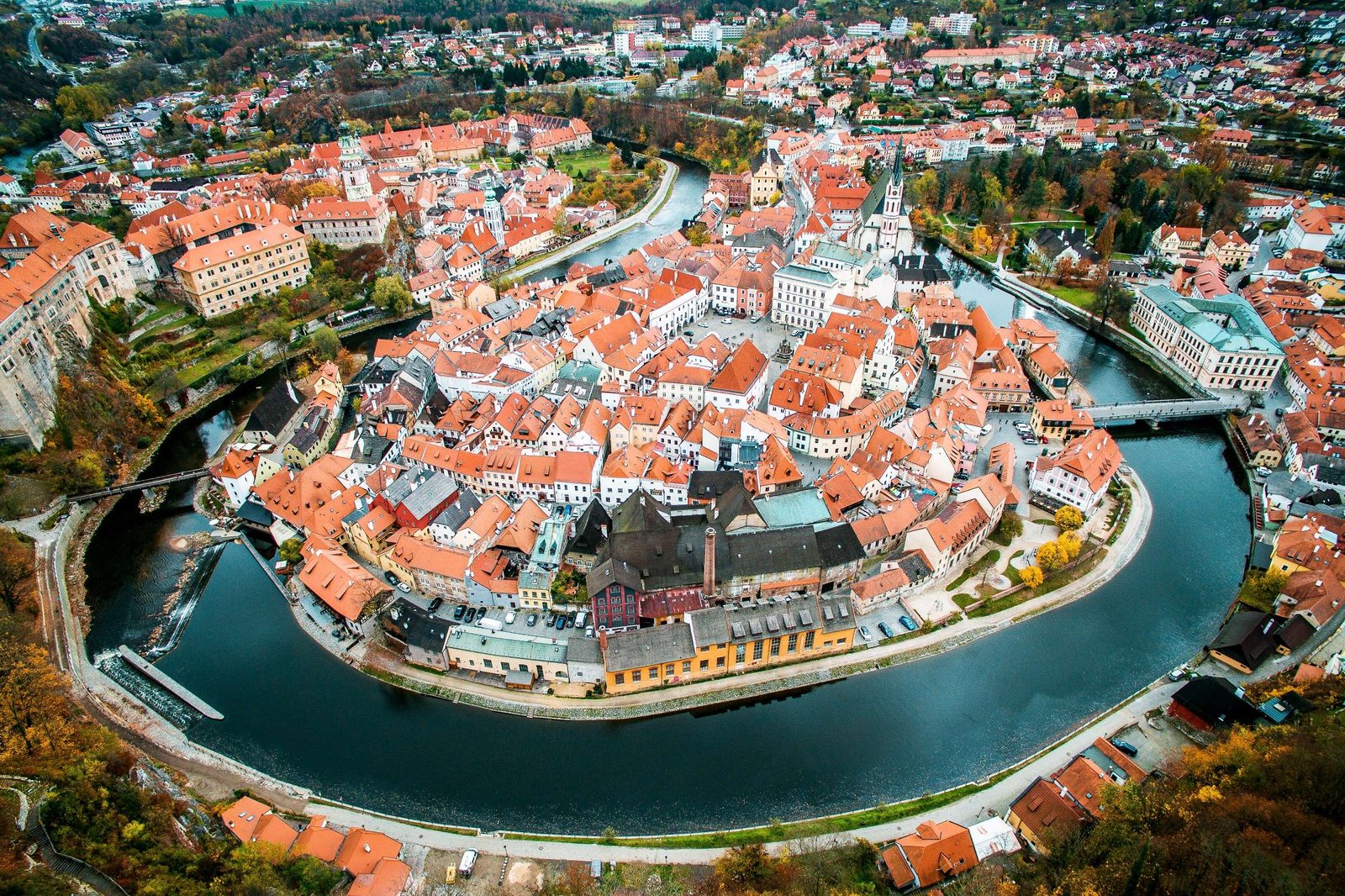
Český Krumlov
🧠 Fact: A UNESCO World Heritage town with a well-preserved medieval core.
💡 Tip: Visit the castle and enjoy a performance at the revolving auditorium.
Info - A UNESCO World Heritage treasure, Český Krumlov is a storybook medieval town wrapped around the looping Vltava River. Its cobbled streets, Renaissance and baroque facades, and atmospheric alleys lead to one of Europe’s best-preserved castle complexes. Český Krumlov Castle, with its famous round tower and elaborately painted interiors, overlooks a historic Old Town of lively cafés, artisan shops, and museums. The town hosts summer music festivals, rafting adventures, and lively markets. Its riverside views, medieval charm, and vibrant arts scene make it one of the Czech Republic’s most beloved and picturesque destinations.
- 📍 Czech Republic, Český Krumlov
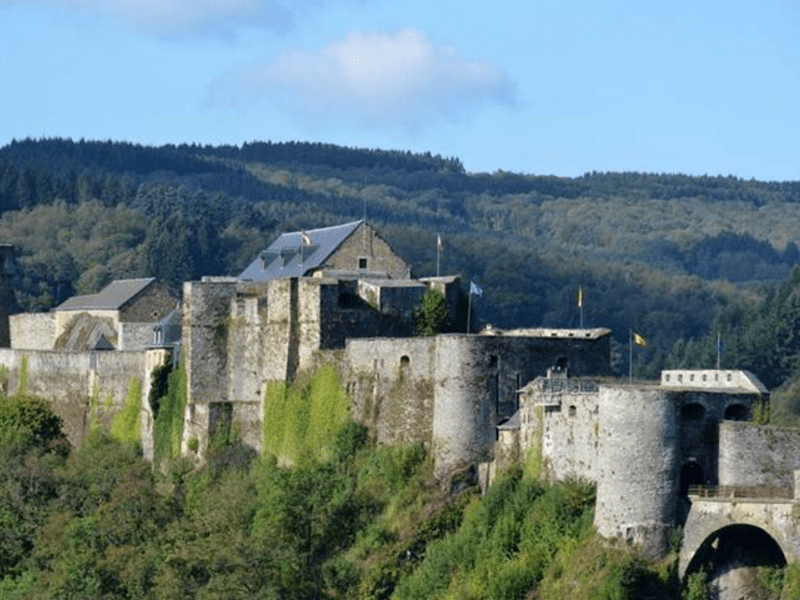
Château de Bouillon
🧠 Fact: A medieval castle offering panoramic views of the Semois Valley and interactive exhibits on its history.
💡 Tip: Attend the falconry show for an engaging experience.
Info - Perched on a rocky ridge above the Semois River, the medieval Château de Bouillon is one of Belgium’s oldest and most impressive castles. Dating back to the 8th century, it offers panoramic views of the valley and insight into feudal life. Visitors can explore dungeons, towers, and ramparts, and catch seasonal falconry displays in its inner courtyard.
- 📍 Belgium , Bouillon
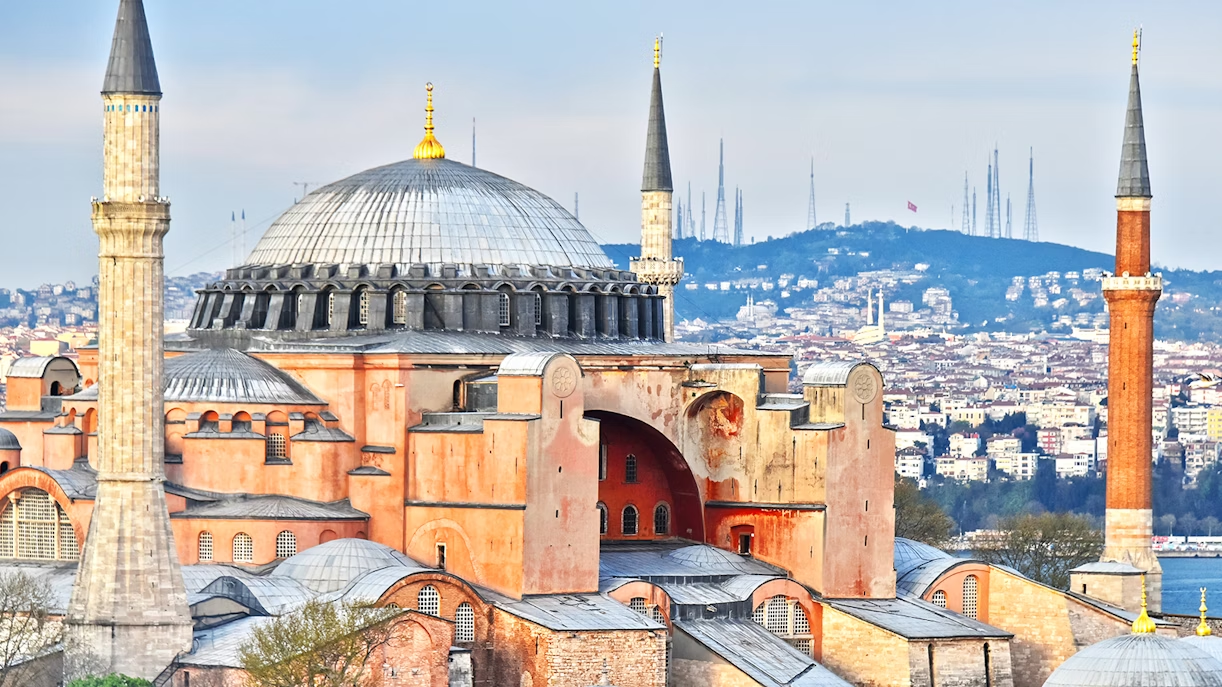
Church of Saint Sophia
🧠 Fact: A 5th-century basilica ruin with unique open-air design
💡 Tip: Great for quiet reflection and stunning photography
Info - Standing as one of the oldest and most iconic structures in Nessebar’s Old Town, the Church of Saint Sophia dates back to the 5th–6th century. Often called the Old Bishopric, this early Christian basilica was once the town’s main cathedral. Though partially ruined, its impressive stone and brick walls, towering arches, and surviving fresco traces give a glimpse into Nessebar’s storied religious history. The open-air remains, surrounded by cobbled lanes and charming houses, make it a favorite photo stop. Visitors can wander freely through the ancient structure, admiring its symmetry and historical significance within the UNESCO-listed peninsula town.
- 📍 Bulgaria , Nessebar
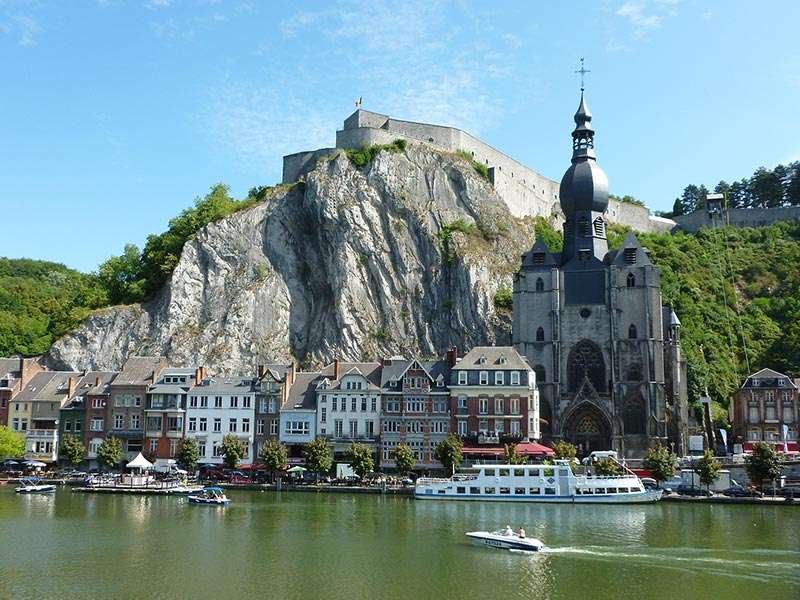
Citadel of Dinant
🧠 Fact:: A fortress overlooking the Meuse River, offering historical exhibits and panoramic views.
💡 Tip: Take the cable car for a scenic ascent to the citadel.
Info -Perched high above the Meuse River, the Citadel of Dinant is an impressive fortress with sweeping views of the valley and town below. Originally built in the 11th century and rebuilt in the 19th, it played a key defensive role through various conflicts. Visitors can explore the barracks, dungeons, and artillery exhibits while enjoying panoramic terraces. The cable car ride up offers a scenic alternative to the 408-step climb. It’s a must-see for history lovers and photographers alike.
- 📍 Belgium , Dinant
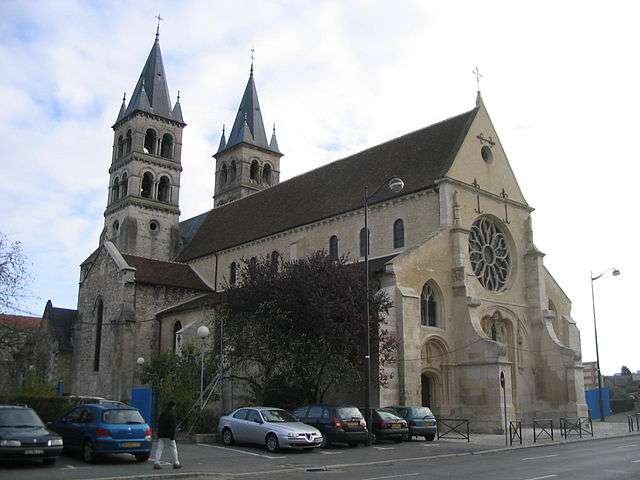
Collegiate Church of Notre-Dame
🧠 Fact: A 13th-century Gothic church known for its distinctive onion-shaped dome.
💡 Tip: Visit in the evening to see the church beautifully illuminated
Info - Dominating Dinant’s riverside skyline, the Collegiate Church of Notre-Dame is known for its striking onion-shaped bell tower and Gothic architecture. Dating back to the 13th century, the church features beautiful stained glass windows and an atmosphere of quiet elegance. Inside, visitors admire religious artworks, centuries-old stonework, and the serene setting. Its dramatic position at the foot of a cliff adds to its photogenic appeal, making it one of Dinant’s most iconic landmarks.
- 📍 Belgium , Dinant
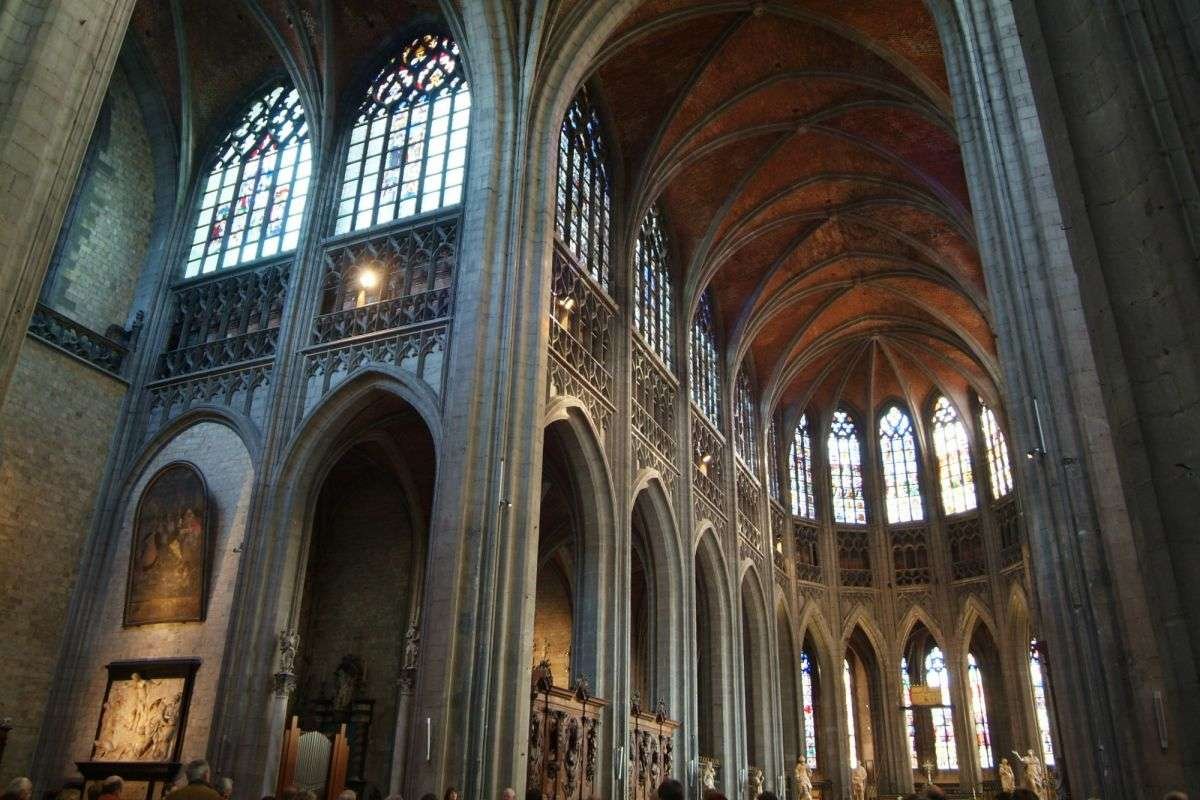
Collegiate Church of Sainte-Waudru
🧠 Fact: A Gothic-style church housing a treasury of religious artifacts and sculptures.
💡 Tip: Don't miss the 16th-century alabaster statues by Jacques Du Broeucq.
Info - A masterpiece of Gothic architecture, the Collegiate Church of Sainte-Waudru dominates the Mons skyline. Built between the 15th and 17th centuries, it features impressive stained glass windows, elaborate chapels, and a magnificent collection of religious art. The church is renowned for its Car d’Or, a golden ceremonial carriage paraded during the city’s famous Doudou Festival. History and architecture enthusiasts will appreciate its tranquil atmosphere, soaring arches, and intricate stone carvings.
- 📍 Belgium , Mons
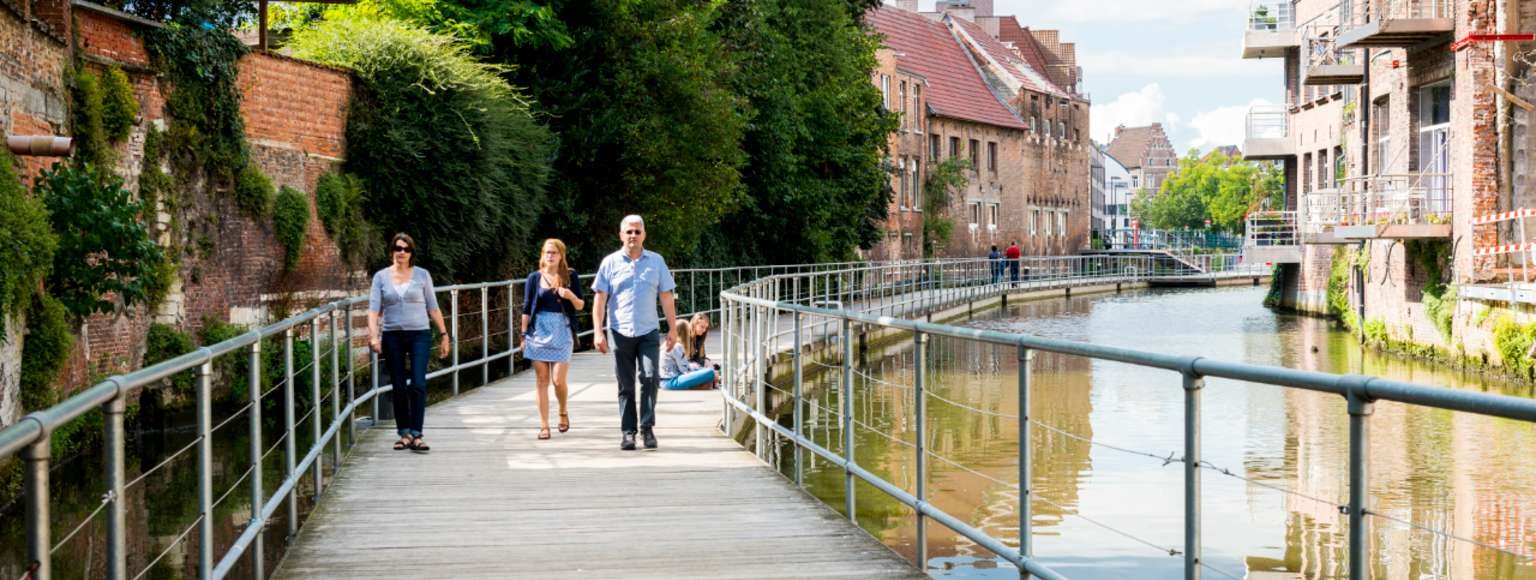
Dijlepad Floating Walkway
🧠 Fact: A scenic floating path along the River Dijle, offering unique views of the city’s architecture and nature.
💡 Tip: Ideal for a peaceful walk during sunrise or sunset.
Info - A hidden gem in Mechelen, the Dijlepad is a tranquil floating path along the River Dijle, offering a peaceful, waterside perspective of the city. Lined with historic buildings and lush greenery, it’s ideal for leisurely strolls and quiet reflection, showcasing Mechelen’s blend of urban charm and natural beauty.
- 📍 Belgium , Mechelen
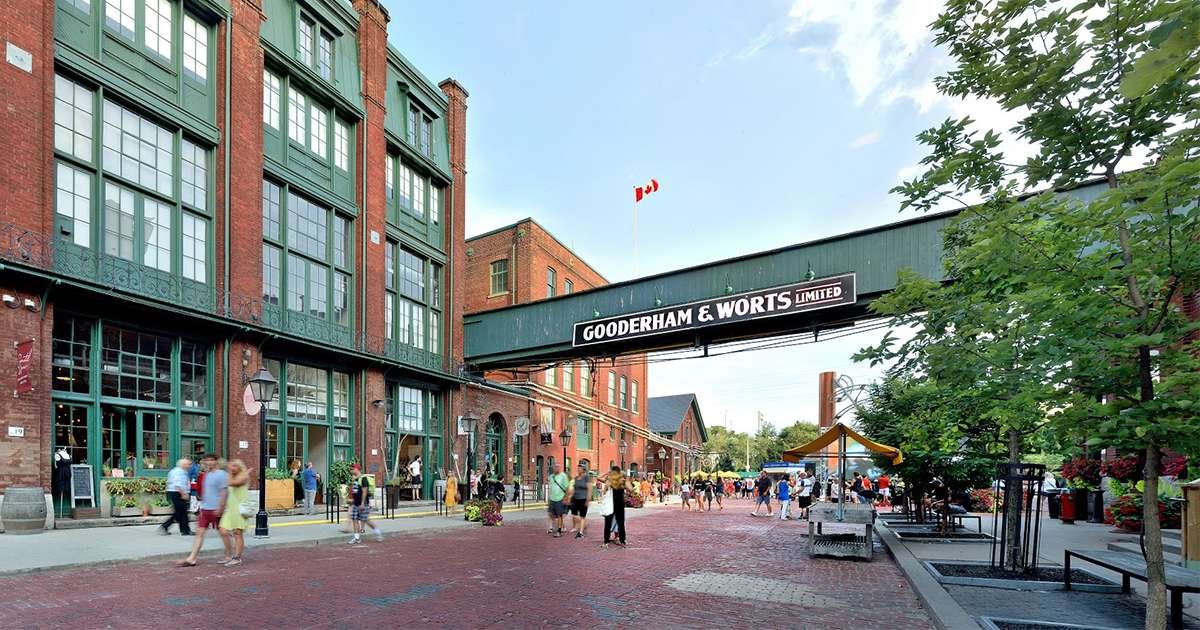
Distillery Historic District
🧠 Fact: : A 19th-century industrial site turned artsy hangout.
💡 Tip: Come during December for the famous Christmas Market.
Info - A beautifully preserved 19th-century industrial complex, the Distillery Historic District blends cobblestone streets with Victorian architecture and trendy modern culture. Once home to the largest distillery in the British Empire, it’s now a hub for indie boutiques, art galleries, cozy cafes, and restaurants. Festivals, outdoor markets, and light installations make it lively year-round. Its atmospheric setting is perfect for leisurely walks, food tastings, and photography. The district’s car-free layout adds to its charm, especially during the magical annual Christmas Market.
- 📍 Canada , Toronto
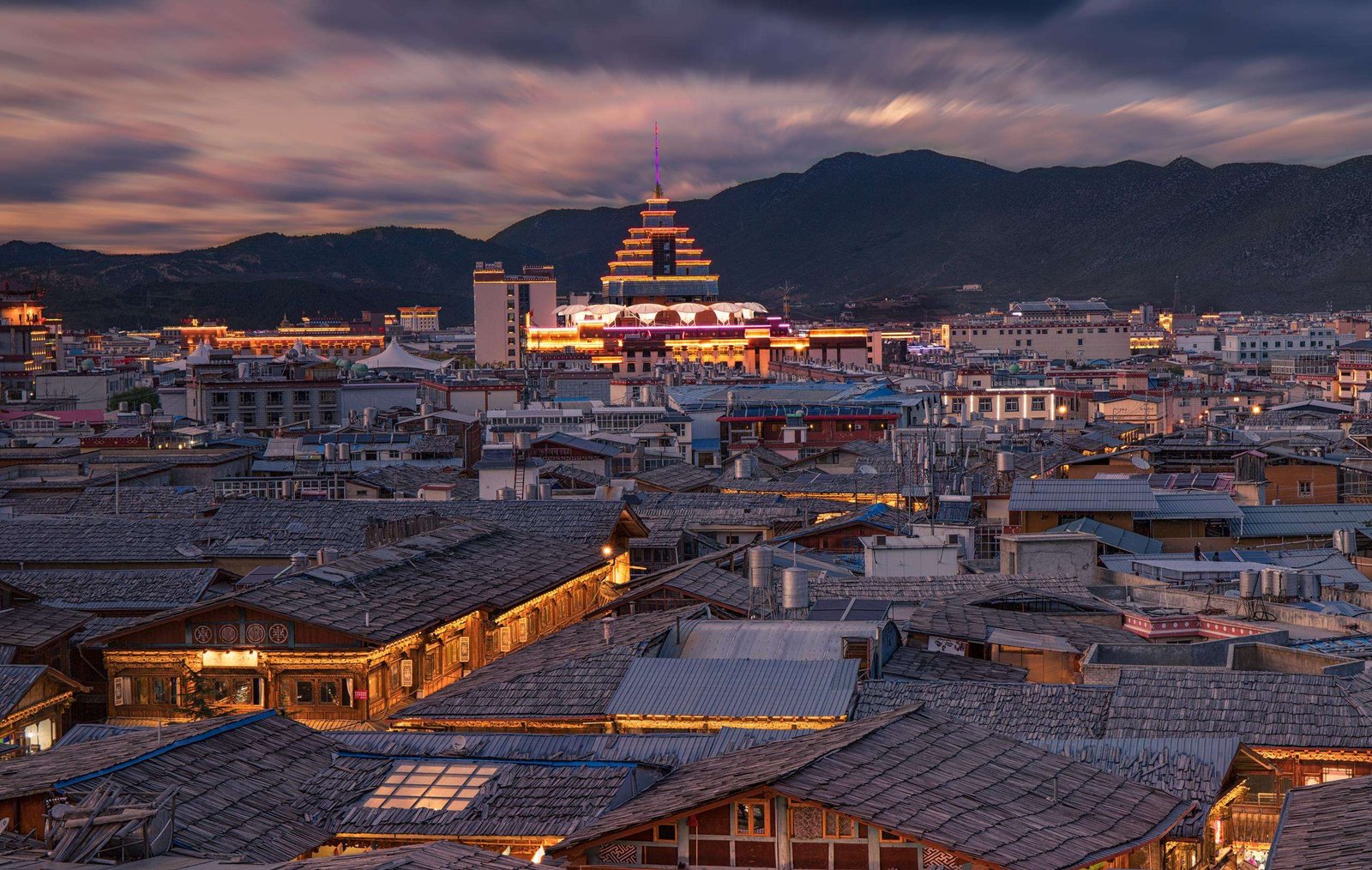
Dukezong Ancient Town
🧠 Fact: : A historic Tibetan town with winding lanes and prayer wheels.
💡 Tip: Climb the hill to the world’s largest prayer wheel.
Info - Dukezong Ancient Town is a beautifully preserved Tibetan settlement in Shangri-La, with over 1,300 years of history. Cobblestone streets, traditional wooden homes, and colorful prayer flags create a timeless atmosphere. The town is home to Guishan Park, where the world’s largest prayer wheel stands — locals and visitors often spin it for blessings. At night, the old town glows with lanterns and cozy teahouses. Although partially rebuilt after a fire in 2014, Dukezong retains its charm and offers an immersive cultural experience with local crafts, Tibetan cuisine, and mountain view
- 📍 China, Shangri-La
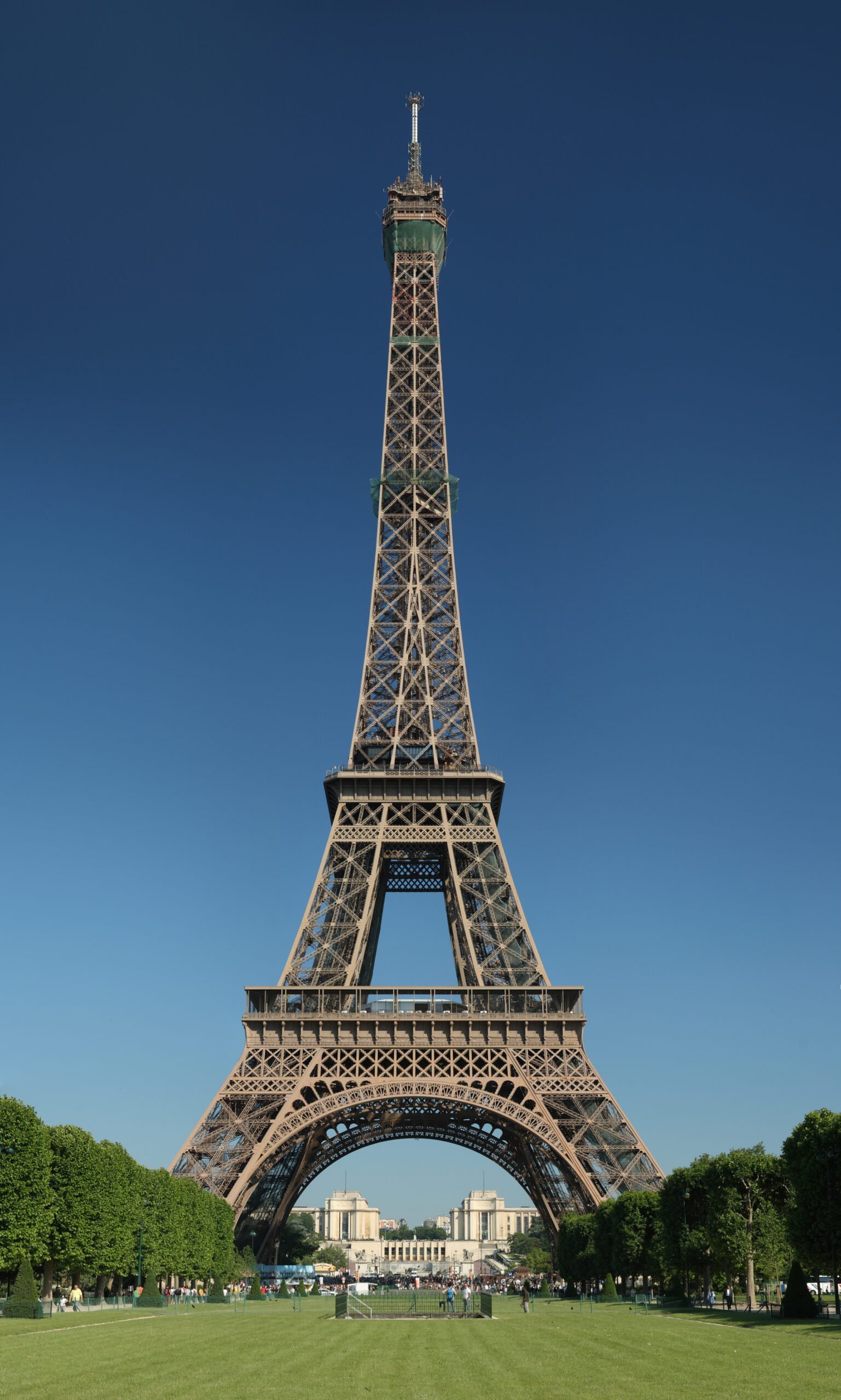
Eiffel Tower
🧠 Fact: The Eiffel Tower is the most-visited paid monument in the world
💡 Tip: Book skip-the-line tickets in advance to avoid long waits.
Info - The Eiffel Tower is Paris’ most iconic landmark and one of the world’s most recognized monuments. Designed by Gustave Eiffel and completed in 1889 for the World’s Fair, this iron masterpiece stands 330 meters tall. Visitors can ascend by elevator or stairs to its viewing platforms, offering breathtaking panoramas of Paris. Illuminated at night by thousands of twinkling lights, the tower embodies the romance and elegance of the French capital. Surrounded by Champ de Mars gardens, it’s a must-see symbol of architectural innovation and timeless Parisian charm.
- 📍 France , Paris
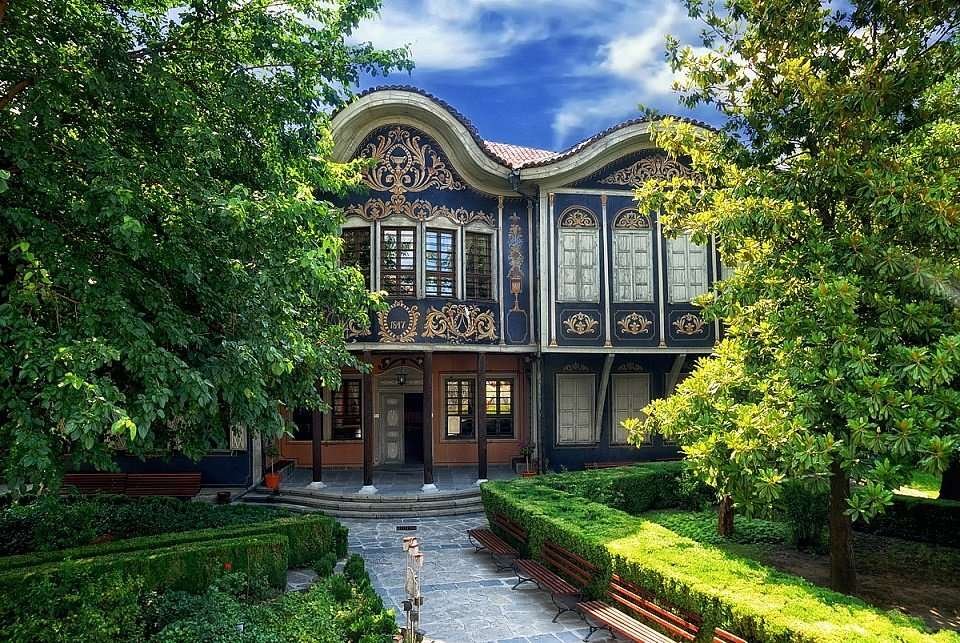
Ethnographic Museum (Plovdiv)
🧠 Fact: Housed in a beautiful Baroque building showcasing Bulgarian traditions.
💡 Tip: Combine this with your Old Town stroll for a cultural deep dive.
Info - Housed in an elegant 19th-century mansion in Plovdiv’s Old Town, the Ethnographic Museum is one of Bulgaria’s finest cultural museums. It showcases the rich traditions, crafts, and daily life of the Bulgarian people through the ages. Inside, visitors can explore six exhibition halls filled with textiles, traditional costumes, tools, musical instruments, and religious artifacts. The beautifully restored house itself, with ornate woodwork and lush gardens, is a historical attraction. The museum offers a vivid picture of Bulgaria’s rural heritage and urban customs, making it a must-see for anyone curious about the country’s cultural roots.
- 📍 Bulgaria , Plovdiv
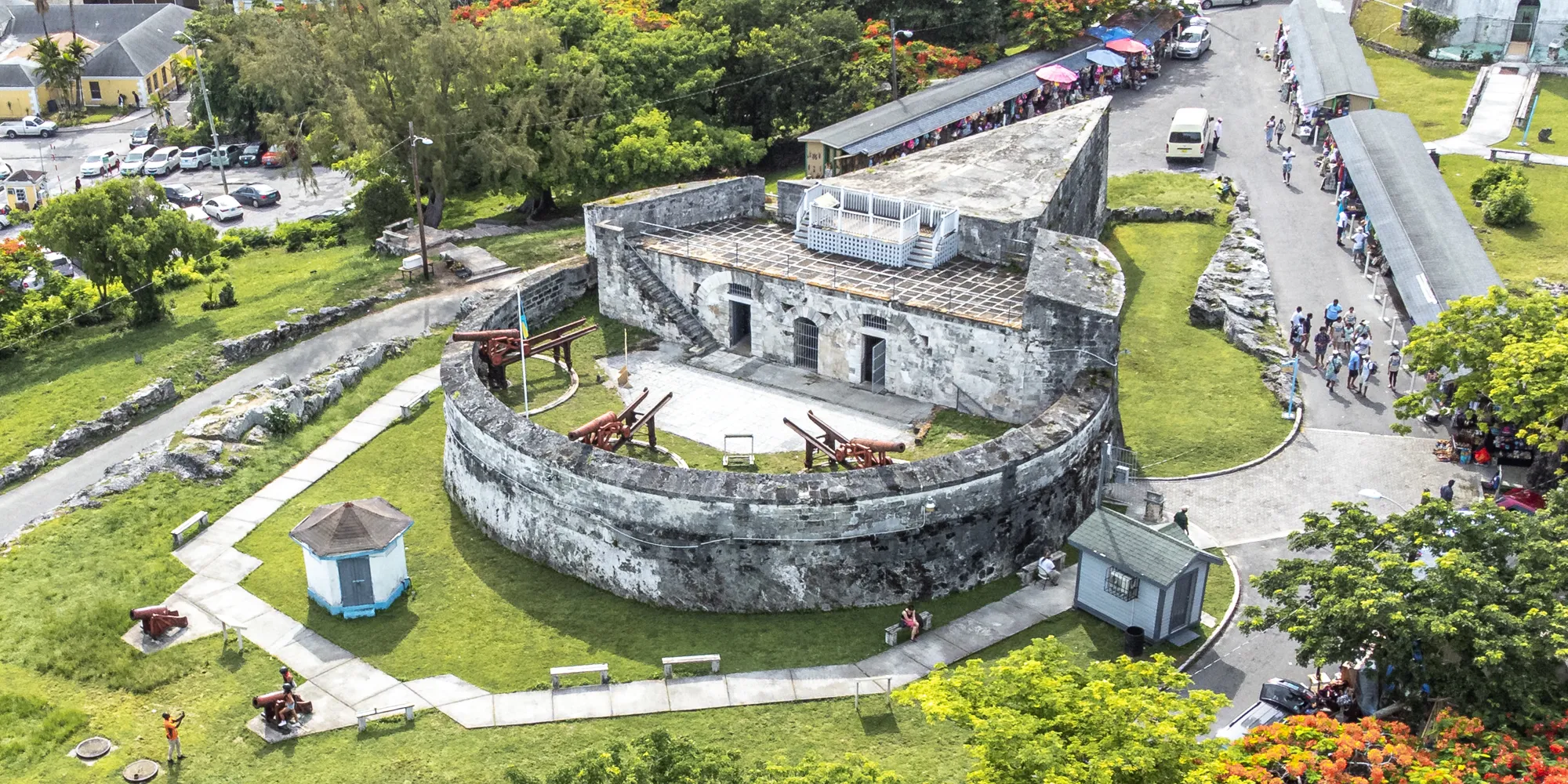
Fort Fincastle
🧠 Fact: Built in 1793, this small fort sits atop Bennett’s Hill and offers panoramic views of Nassau
💡 Tip: Pair this visit with the nearby Queen’s Staircase for a complete experience.
Info - Built in 1793 to protect Nassau’s harbor, Fort Fincastle sits atop Bennet’s Hill, offering panoramic views of the city and ocean. The fort is shaped like a paddle steamer and once housed cannons to defend against pirates and invaders. Visitors can wander through its limestone corridors, climb to the lookout, and soak in Nassau’s best vistas. Its proximity to other landmarks like the Queen’s Staircase makes it a perfect stop for history lovers and sightseers alike.
- 📍 Bahamas, Nassau

Grand Place de Mons
🧠 Fact: The central square of Mons, surrounded by historic buildings and lively cafés, serving as the city's social hub.
💡 Tip: Visit during the Doudou festival to experience local traditions and festivities
Info -The heart of Mons, Grand Place is a lively, cobbled square surrounded by charming cafes, restaurants, and historic buildings. It’s the perfect spot to soak up the city’s atmosphere, especially during festivals and markets. The elegant Hotel de Ville (Town Hall) dominates the square, while nearby boutiques and bistros keep it bustling throughout the day and night. Visitors love sitting at one of the many terraces, people-watching, and admiring the beautiful mix of medieval and neoclassical architecture. It’s the city’s social and cultural heartbeat.
- 📍 Belgium , Mons
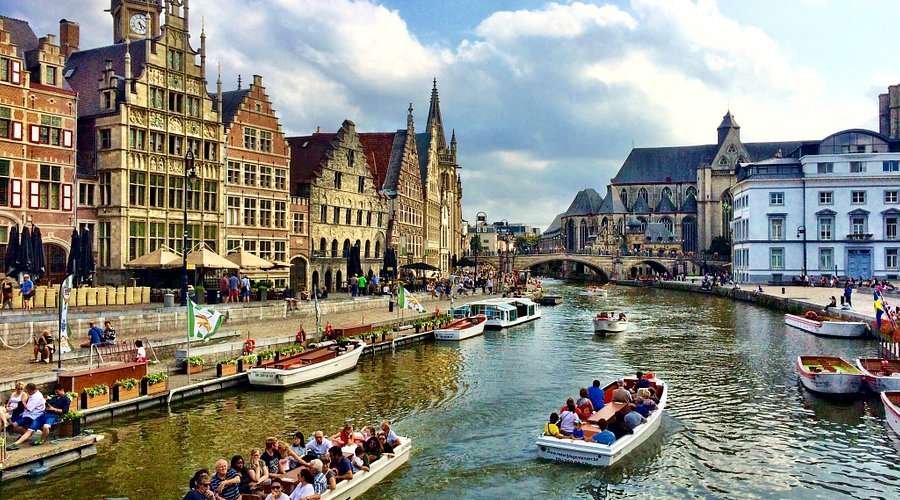
Graslei and Korenlei
🧠 Fact: These two medieval harbor streets are among the most picturesque in Europe.
💡 Tip: Take a boat tour from the river for a scenic view of the city.
Info - These picturesque streets along the River Leie are the most photographed spots in Ghent. Lined with beautifully restored medieval guild houses, the area once served as the city’s trade hub. Today, it’s a lively riverside promenade filled with cafés and bars, perfect for boat rides, sunset strolls, and soaking up Ghent’s old-world charm.
- 📍 Belgium , Ghent
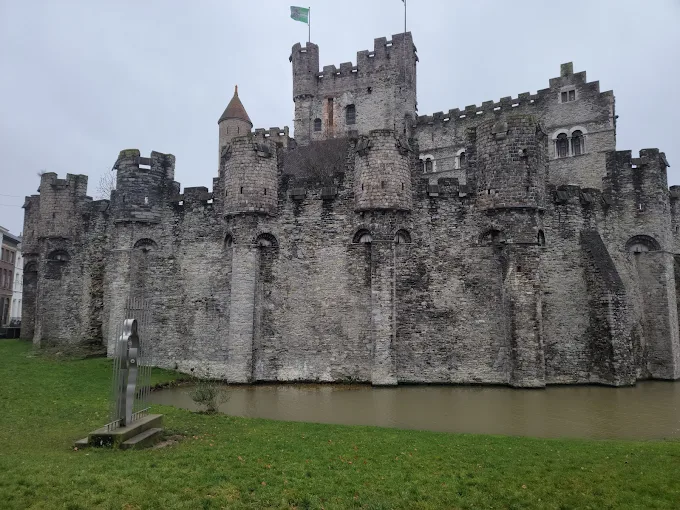
Gravensteen Castle
🧠 Fact: A 12th-century fortress complete with a torture museum and panoramic rooftop views.
💡 Tip: Don’t skip the audio tour—it’s full of humor and fascinating facts.
Info - Gravensteen Castle is a medieval fortress in the heart of Ghent, built in 1180 by Count Philip of Alsace. With its thick stone walls, imposing towers, and a deep moat, it’s one of Belgium’s best-preserved castles. Inside, visitors can explore exhibits on medieval weaponry, torture devices, and the history of the Counts of Flanders. Its rooftop offers sweeping views of the city’s old town.
- 📍 Belgium , Ghent
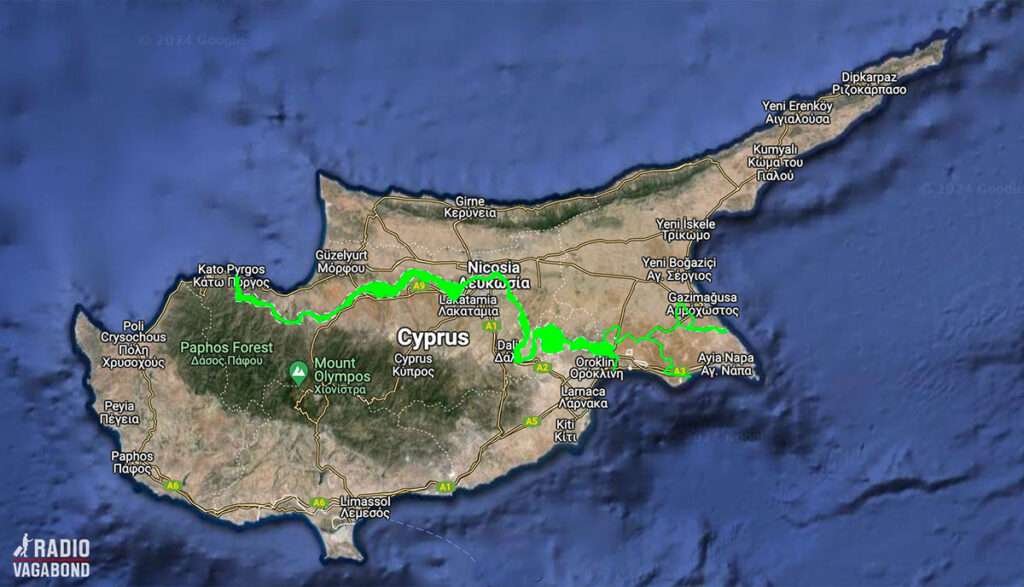
Green Line Walking Tour
🧠 Fact: Nicosia is the world’s last divided capital.
💡 Tip: Bring your passport for crossing.
Info - A walk along Nicosia’s Green Line reveals the world’s last divided capital city. This buffer zone, patrolled by the United Nations, has separated Greek Cypriot and Turkish Cypriot communities since 1974. The walking tour takes you through narrow streets and checkpoint crossings, passing abandoned buildings, watchtowers, and poignant graffiti. Key sights include Ledra Street Crossing, the eerie deserted quarter, and viewpoints overlooking the sealed-off zone. The tour offers a powerful perspective on Cyprus’s modern history, while also showcasing Nicosia’s lively markets, restored old town streets, and cultural fusion on both sides of the divide.
- 📍 Cyprus, Nicosia
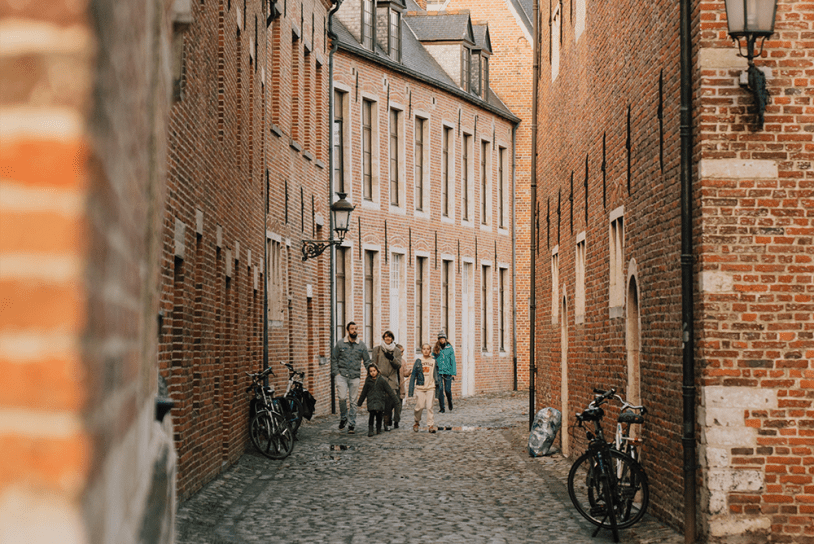
Groot Begijnhof (Grand Beguinage)
🧠 Fact: A UNESCO World Heritage Site, this well-preserved beguinage offers a glimpse into 13th-century communal living
💡 Tip: Walk through the cobblestone streets to appreciate the tranquil atmosphere.
Info - A UNESCO World Heritage Site, this serene historical quarter was once home to religious laywomen known as beguines. The cobbled streets, quaint cottages, and peaceful courtyards feel like stepping back in time. It’s now part of KU Leuven University housing, yet still radiates medieval charm.
- 📍 Belgium , Leuven
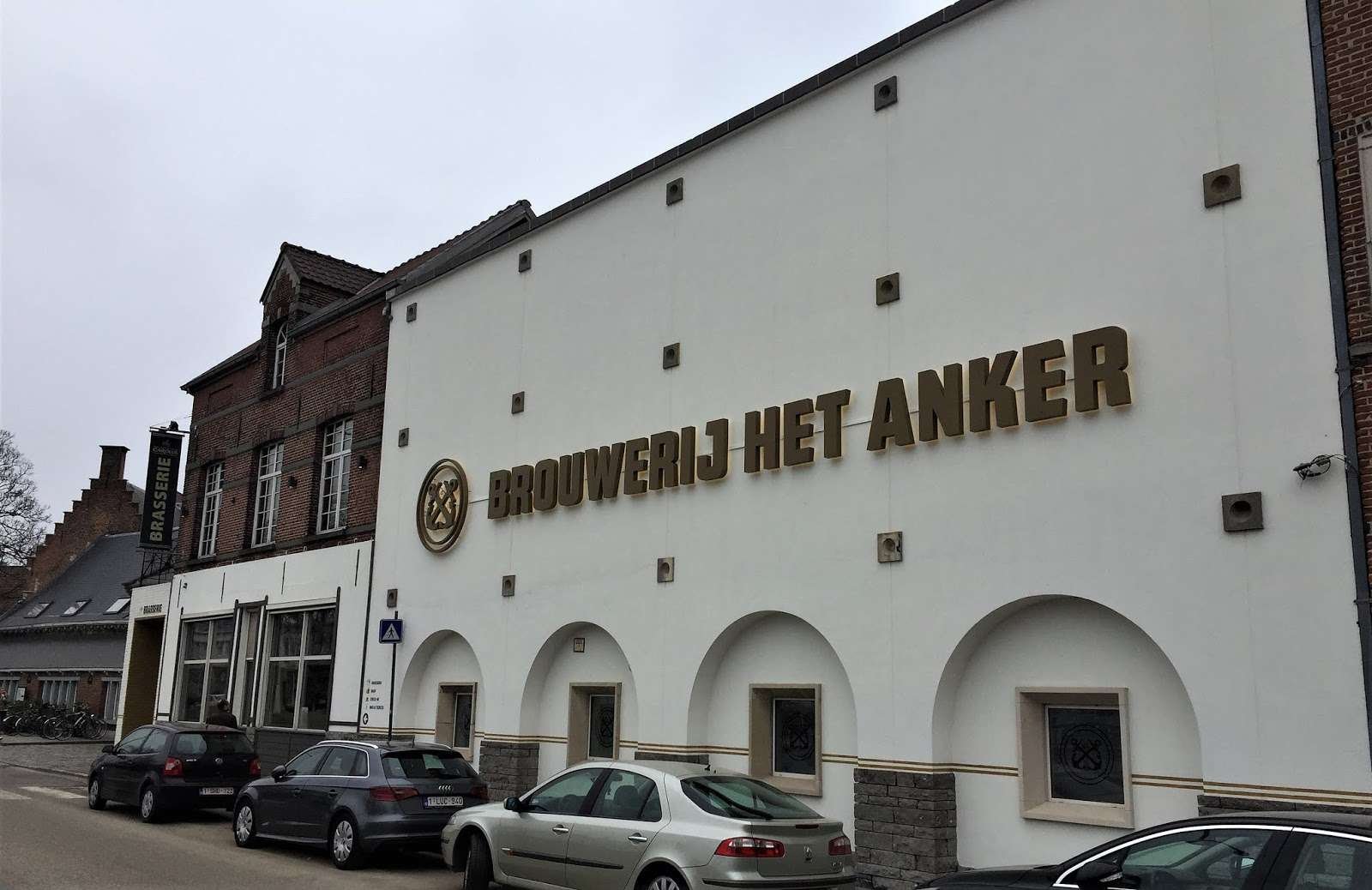
Het Anker Brewery
🧠 Fact: One of Belgium’s oldest breweries, dating back to 1369, known for its award-winning Gouden Carolus beers
💡 Tip: Book a guided tour to learn about the brewing process and enjoy a tasting session.
Info - One of Belgium’s oldest breweries, Het Anker has been crafting beers in Mechelen since the 15th century. Famous for its Gouden Carolus range, this family-run brewery offers guided tours through its historical brewhouse, cellars, and malt house, followed by tastings of rich, full-bodied ales. Its attached brasserie serves hearty Flemish dishes perfectly paired with their house beers
- 📍 Belgium , Mechelen
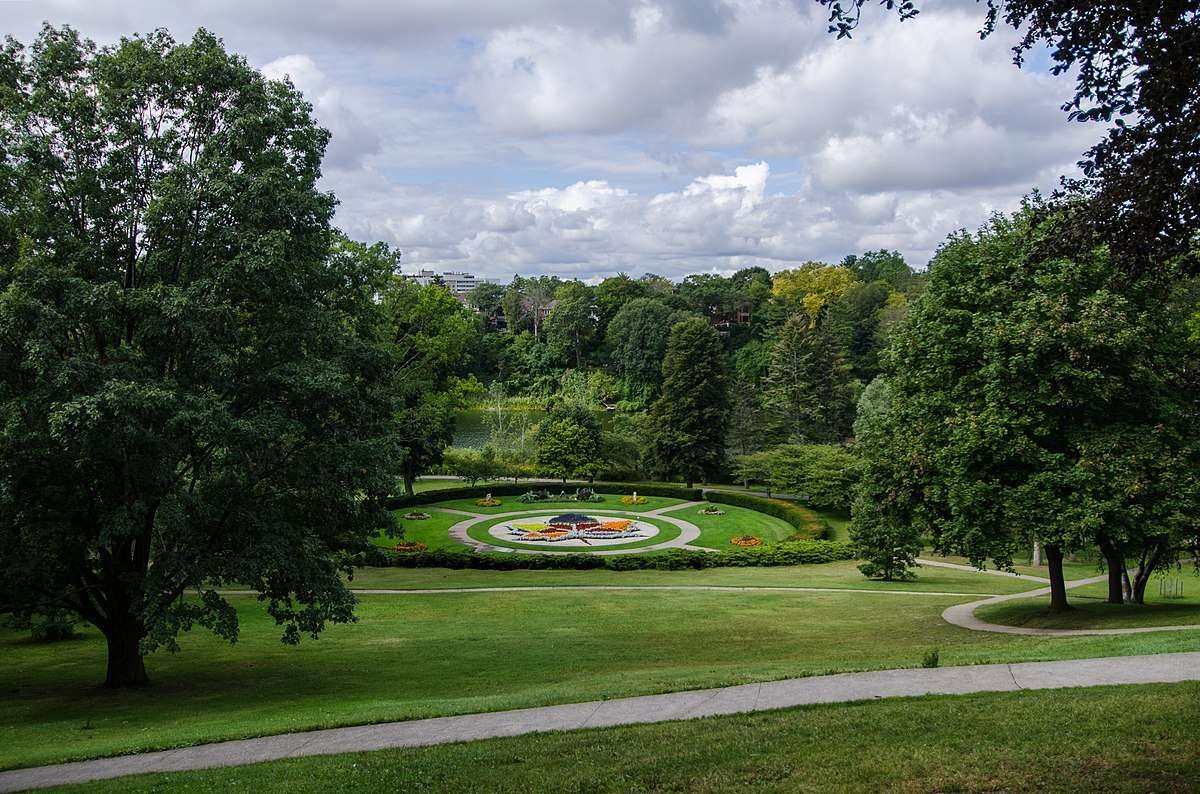
High Park
🧠 Fact: : Toronto’s largest public park with hiking trails, gardens, and a zoo.
💡 Tip: Visit in spring to catch the cherry blossoms.
Info - High Park is Toronto’s largest public park, offering a beautiful mix of natural landscapes and recreational spaces. Famous for its cherry blossoms in spring, the park covers nearly 400 acres and includes walking trails, a zoo, picnic areas, playgrounds, and Grenadier Pond. Visitors love escaping the urban buzz to relax under towering oak trees or paddle in the pond. High Park is also known for Shakespeare in the Park performances during summer. Whether you’re hiking forested trails, enjoying family-friendly activities, or admiring the seasonal blooms, it’s a perfect nature getaway in the heart of Toronto.
- 📍 Canada , Toronto
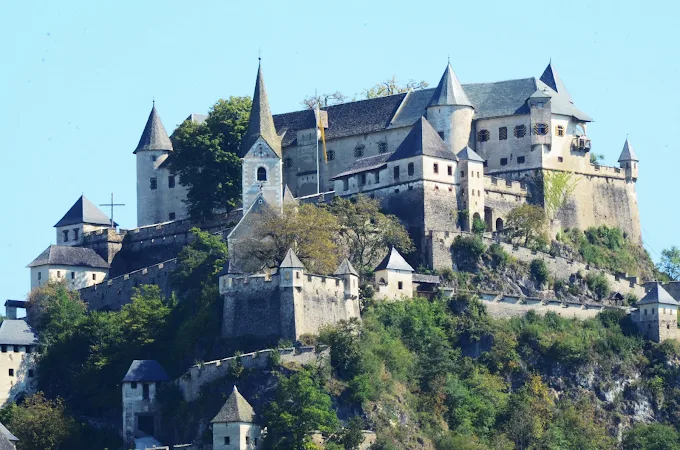
Hochosterwitz Castle
🧠. Fact: One of Austria’s most impressive castles, known for its 14 defensive gates along the steep access road.
💡 Tip: Hike up for the best experience or take the lift for an easier route.
Info -Hochosterwitz Castle is one of Austria’s most impressive and strategically placed fortresses. Dating back to the 9th century, it boasts a dramatic hilltop position, reached via a winding path through 14 fortified gates. Its towering battlements and romantic courtyards transport visitors straight into the pages of history.
- 📍 Austria, Launsdorf, Carinthia
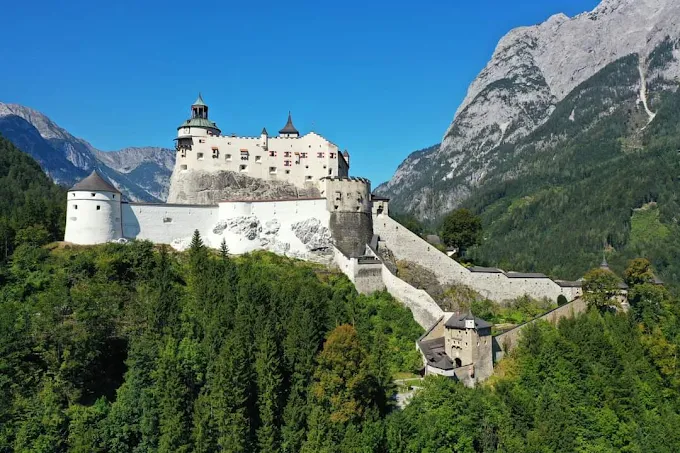
Hohenwerfen Castle
🧠. Fact: : A 900-year-old fortress perched on a cliff, offering falconry shows and medieval vibes.
💡 Tip: : Ride the funicular up and explore the armory and dungeons
Info - For history enthusiasts, Hohenwerfen Castle is an unmissable medieval fortress perched high above the Salzach Valley. This well-preserved castle offers fascinating falconry demonstrations, medieval displays, and sweeping views of the surrounding mountains, delivering a memorable glimpse into Austria’s feudal past.
- 📍 Austria, Werfen, Salzburg
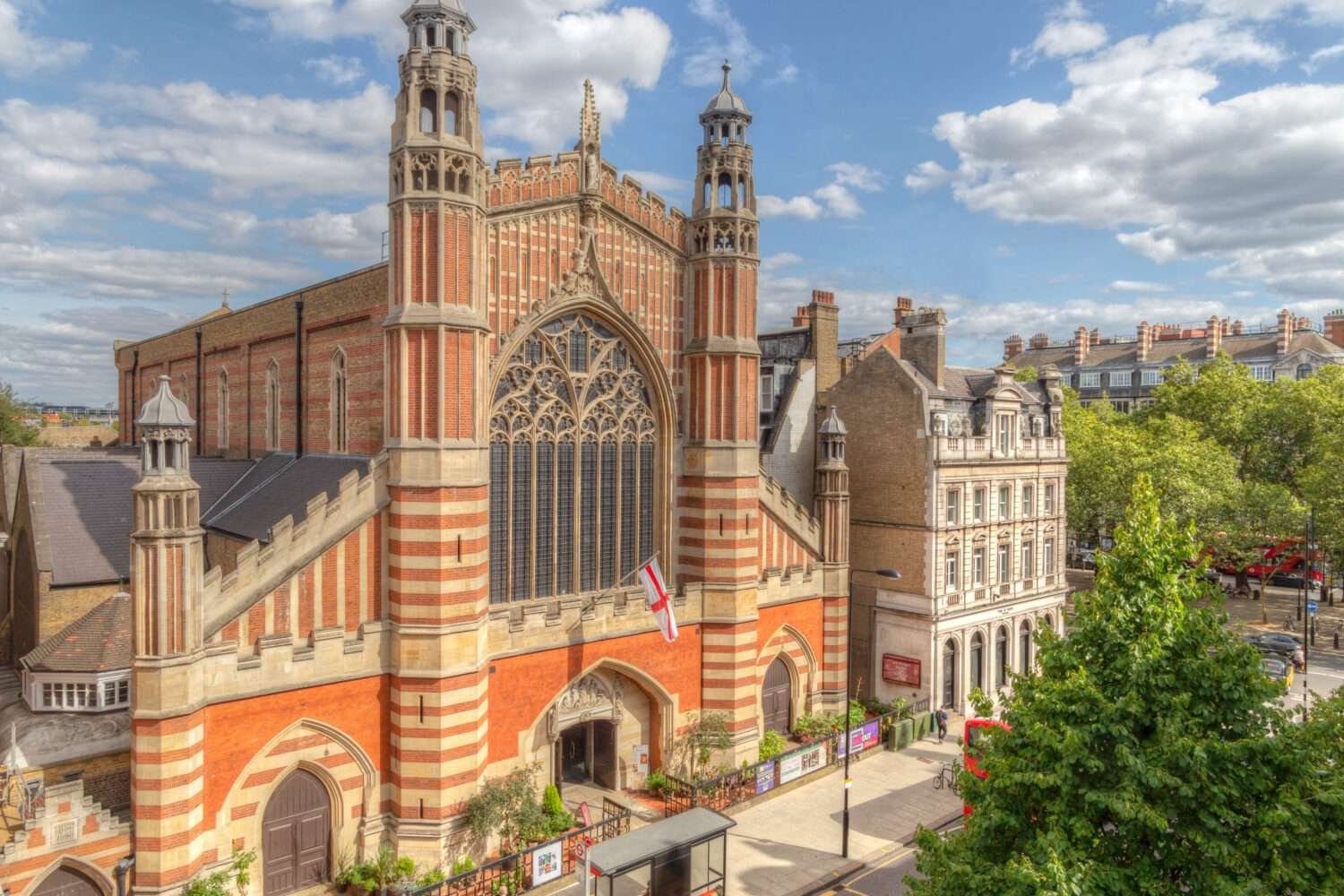
Holy Trinity Church
🧠 Fact: Known for its ornate wood-carved iconostasis and bell tower.
💡 Tip: Photography is allowed inside — bring your camera.
Info - Holy Trinity Church, completed in 1835, is Bansko’s spiritual and architectural jewel. Tucked within the Old Town, this Bulgarian Revival-era Orthodox church features a distinctive stone façade, a 30-meter bell tower, and beautiful interior frescoes. At the time of its construction, the church symbolized local resistance to Ottoman restrictions, as Orthodox churches weren’t allowed to surpass mosque minarets in height. Its bell tower, later added in 1850, discreetly defied that rule. Inside, visitors find intricately carved woodwork, religious icons, and a peaceful, reverent atmosphere. Holy Trinity Church remains an important cultural and religious site, reflecting Bansko’s enduring faith and resilience.
- 📍 Bulgaria , Bansko
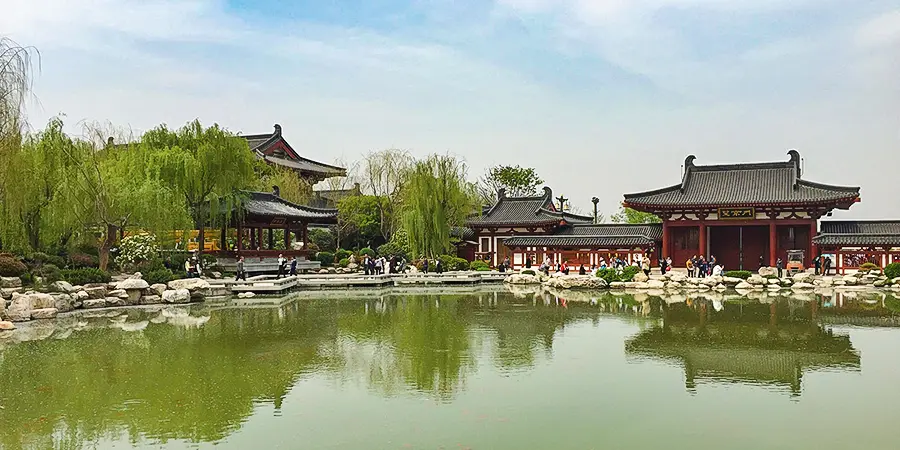
Huaqing Palace & Hot Springs
🧠 Fact: Historic site of ancient hot springs and imperial romance.
💡 Tip: Often paired with a visit to the Terracotta Army.
Info - Nestled at the foot of Mount Li, Huaqing Palace has been a favored retreat for emperors for over 3,000 years. Famed for its natural hot springs and imperial baths, the complex is associated with the tragic romance of Emperor Xuanzong and his consort Yang Guifei. Elegant pavilions, serene gardens, and scenic pools surround the ancient palace ruins. Visitors can explore historical exhibits, soak their feet in mineral-rich spring water, and enjoy cultural performances. The site’s location offers mountain views and connects to nearby historical attractions like the Terracotta Army and Mount Hua, making it a relaxing historical escape.
- 📍 China, Xi’an, Shaanxi Province
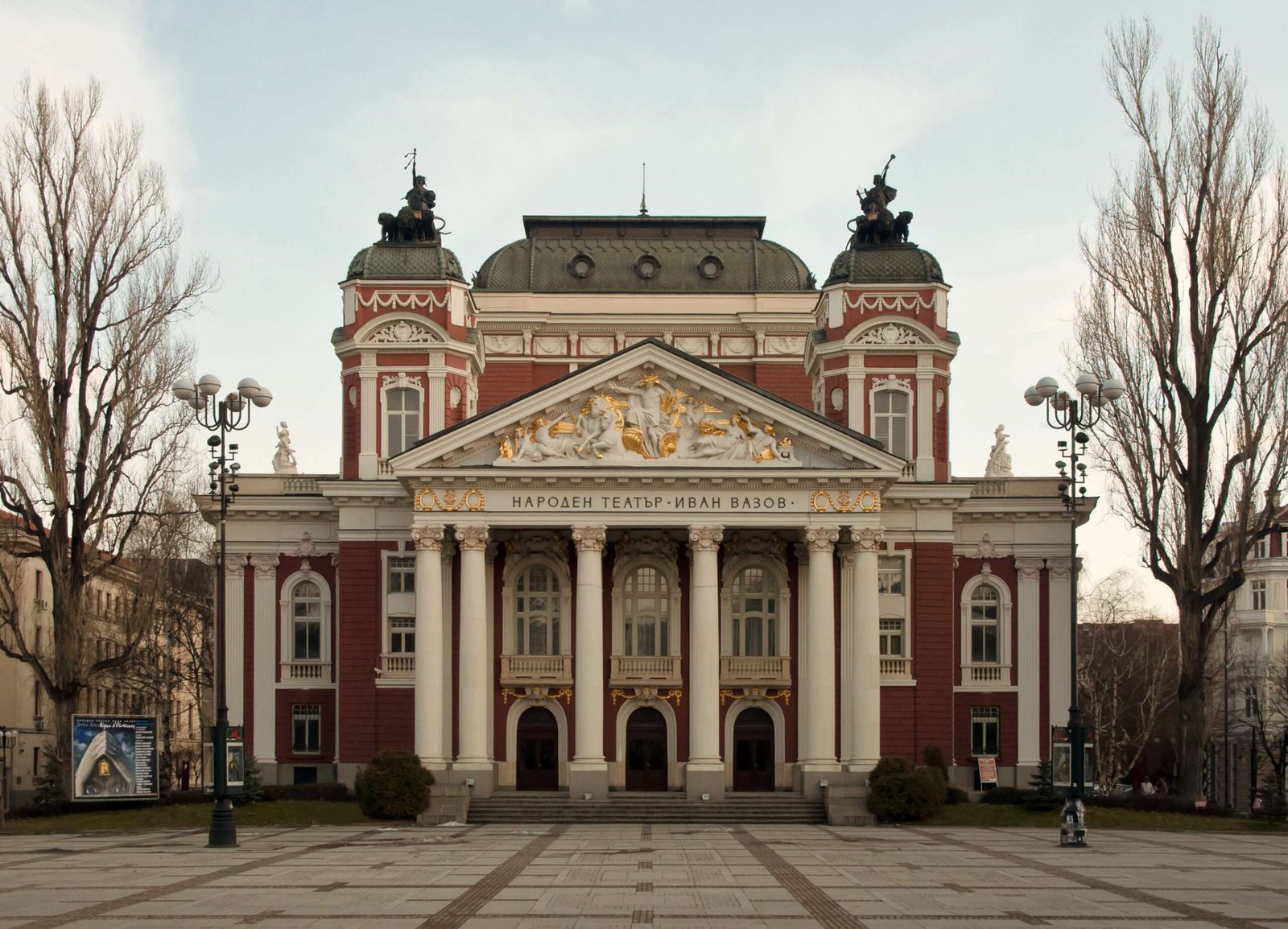
Ivan Vazov National Theatre
🧠 Fact: Bulgaria’s oldest and most prestigious theatre, built in 1907.
💡 Tip: : Even if you don’t see a show, admire the stunning neoclassical facade.
Info - Standing proudly in Sofia’s city center, the Ivan Vazov National Theatre is one of Bulgaria’s most beloved cultural institutions. Built in 1907, it showcases elegant Neoclassical architecture, with its iconic columned façade and bronze statues. Named after renowned Bulgarian writer Ivan Vazov, the theatre hosts a rich program of dramas, comedies, and classical works by Bulgarian and international playwrights. Its lavish interior, complete with ornate chandeliers and red velvet seating, offers an atmospheric setting for memorable performances. Surrounded by a lively park, it’s a perfect spot to enjoy a play or simply relax at one of the charming nearby cafés.
- 📍 Bulgaria , Sofia
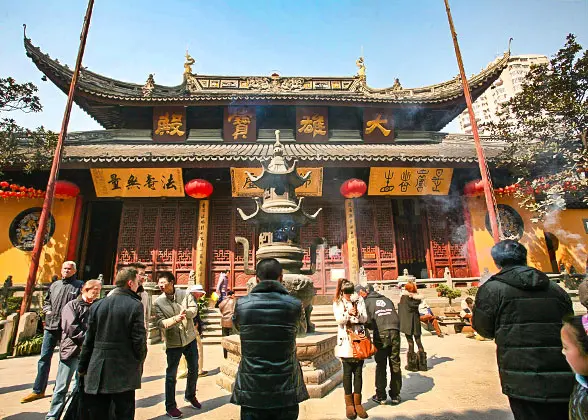
Jade Buddha Temple
🧠 Fact: Houses two jade Buddha statues imported from Burma.
💡 Tip: Respect local customs and dress modestly.
Info - One of Shanghai’s most famous religious sites, the Jade Buddha Temple was founded in 1882 and houses two exquisite jade Buddha statues brought from Burma. The seated Buddha, carved from pure white jade, radiates serenity and craftsmanship. The temple complex features ornate halls, fragrant incense, and peaceful courtyards, offering a quiet retreat from city life. Monks perform daily rituals, and visitors can partake in vegetarian meals at the temple’s restaurant. It’s a cherished spiritual landmark in modern Shanghai, blending traditional Buddhist culture with a welcoming atmosphere for both worshippers and curious travelers.
- 📍 China, Shanghai
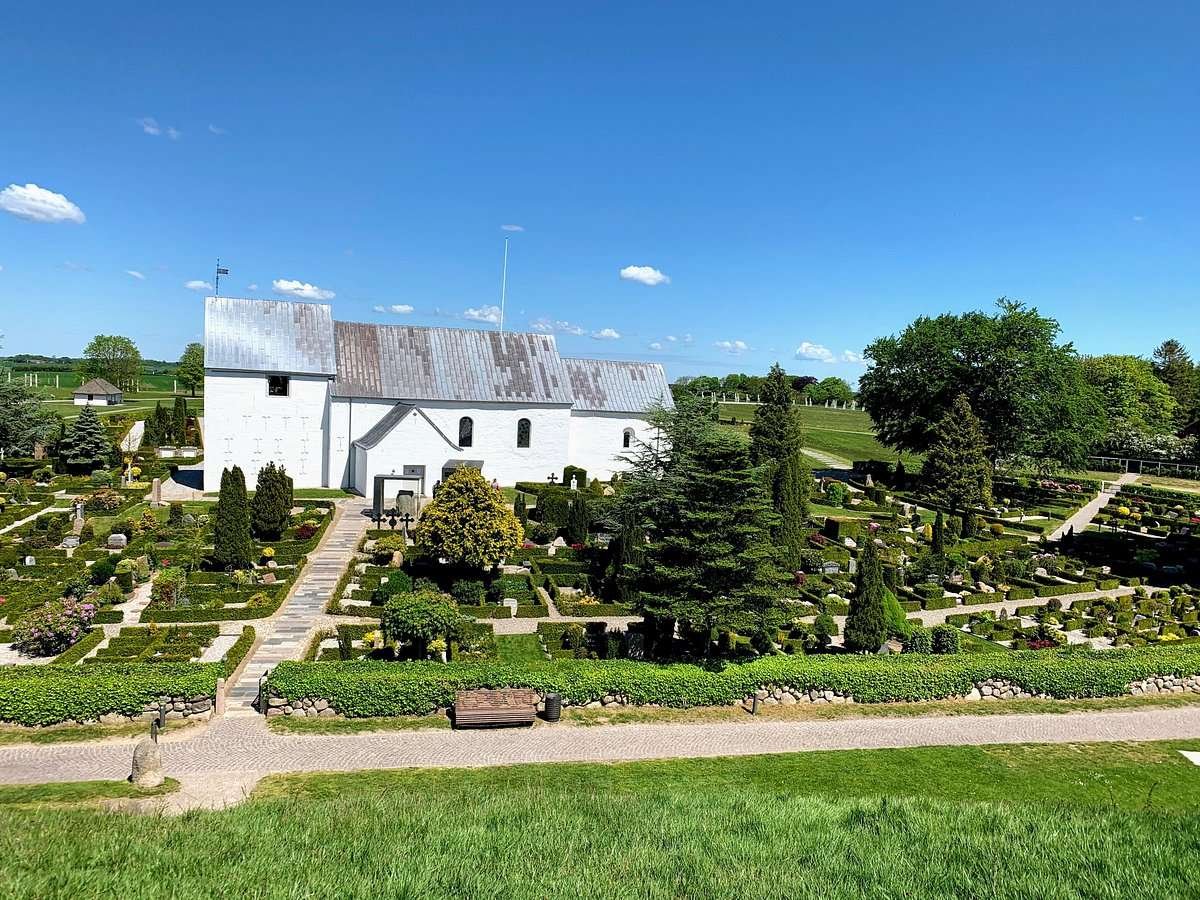
Jelling Church
🧠 Fact: Built in the 11th century, it stands on the site of earlier wooden churches.
💡 Tip: Explore the churchyard to see the ancient burial mounds up close.
Info - Standing at the heart of the historic Jelling complex, Jelling Church is a simple yet historically significant whitewashed church built in the 12th century. It marks the site where Denmark’s first Christian church was erected by King Harald Bluetooth. The current Romanesque building, built atop its wooden predecessor, is flanked by the famous rune stones and burial mounds. Inside, ancient stonework and decorative frescoes preserve medieval craftsmanship, while outside, the church’s peaceful graveyard complements the ancient Viking history surrounding it. It’s a serene and sacred stop in Denmark’s national story.
- 📍 Denmark, JElling
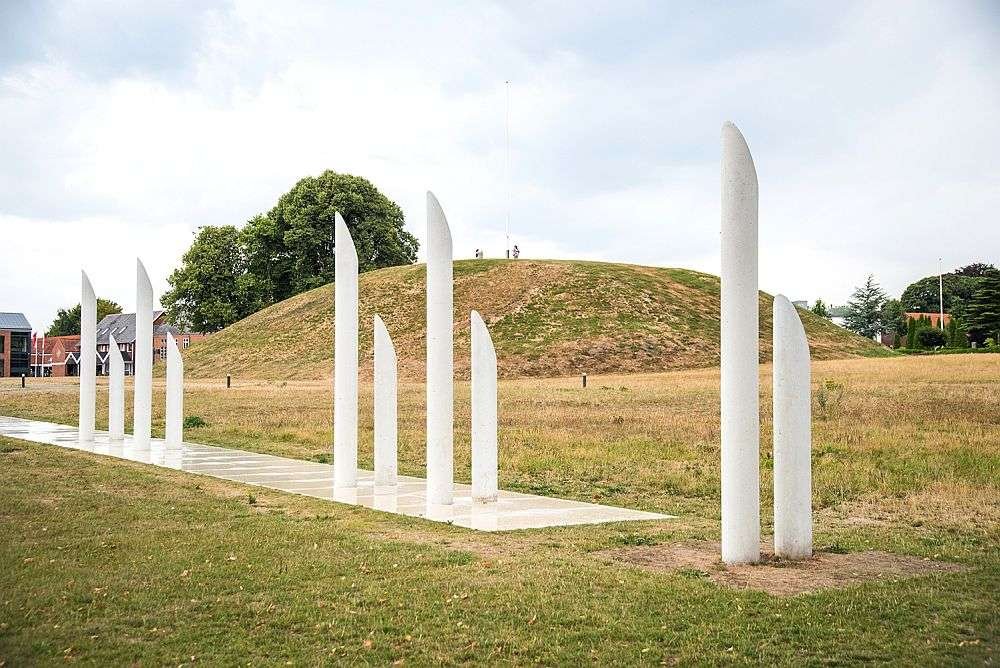
Jelling Monuments (UNESCO World Heritage Site)
🧠 Fact: Features two massive runestones erected by Viking kings Gorm the Old and Harald Bluetooth.
💡 Tip: Visit the site at dusk to see the monuments beautifully illuminated.
Info - The Jelling Monuments are among Denmark’s most significant Viking-era landmarks and a designated UNESCO World Heritage Site. Dating back to the 10th century, they include two massive burial mounds and runic stones erected by King Gorm the Old and his son Harald Bluetooth, who famously converted Denmark to Christianity. The largest rune stone is often called “Denmark’s birth certificate” for its inscription declaring Harald’s achievements. Surrounded by ancient churchyards and palisade markings, the site embodies the transition from paganism to Christianity. It’s a moving testament to Denmark’s early nationhood and Viking heritage.
- 📍 Denmark, JElling
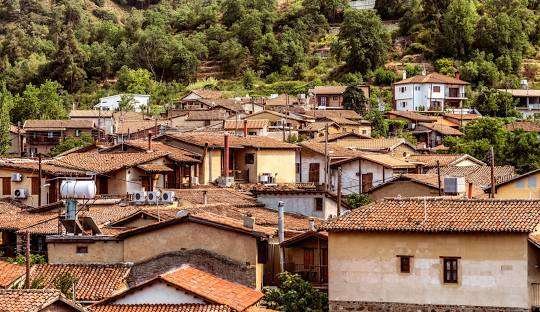
Kakopetria
🧠 Fact: A charming mountain village with traditional architecture and cobbled streets.
💡 Tip: Visit the old quarter for photos and fresh mountain air.
Info - Nestled in the Troodos Mountains, Kakopetria is one of Cyprus’s prettiest and most atmospheric villages. Characterized by narrow cobbled lanes, stone houses with wooden balconies, and bubbling mountain streams, it’s a favorite escape for locals and visitors alike. The village is known for its preserved medieval Old Quarter and nearby Byzantine churches, including Agios Nikolaos tis Stegis, a UNESCO World Heritage site with remarkable frescoes. Kakopetria’s cool mountain air and serene surroundings make it a perfect destination for nature walks, traditional tavern meals, and exploring Cyprus’s rich religious and architectural heritage in a picturesque, rustic setting.
- 📍 Cyprus, Kakopetria
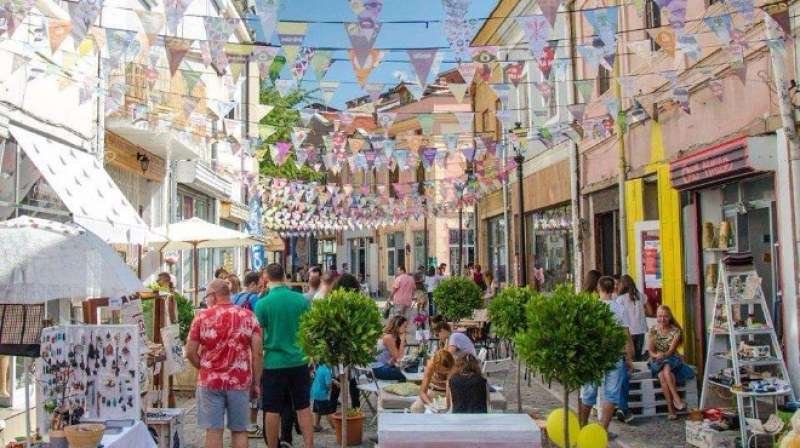
Kapana Creative District
🧠 Fact: “The Trap” is a trendy neighborhood full of art, bars, and boutiques.
💡 Tip: Explore it on foot in the evening when it's most vibrant.
Info - Plovdiv’s Kapana Creative District is a buzzing arts hub filled with vibrant street art, boutique galleries, artisan workshops, and cozy cafés. Nicknamed “The Trap” for its maze-like alleys, Kapana is a favorite gathering spot for creatives and travelers alike. Once a neglected part of the city, it’s now a thriving cultural quarter hosting regular art festivals, craft fairs, and open-air concerts. By day, visitors browse handmade jewelry, ceramics, and designer goods. By night, bars and bistros come alive with live music and craft beers. It’s the perfect place to soak up Plovdiv’s youthful, bohemian energy.
- 📍 Bulgaria , Plovdiv
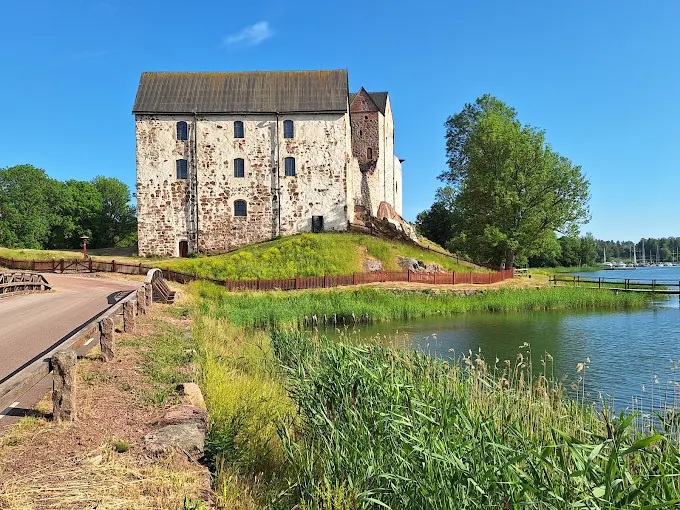
Kastelholm Castle
🧠 Fact: The only medieval castle in Åland, dating back to the 14th century
💡 Tip: Visit the nearby open-air Jan Karlsgården Museum.
Info - Kastelholm Castle is a picturesque medieval fortress located on the Åland Islands. Dating back to the 14th century, the castle once served as a royal residence and stronghold under Swedish rule. Overlooking a tranquil inlet and surrounded by lush countryside, Kastelholm features restored rooms, museum exhibitions, and atmospheric ruins that reflect centuries of Nordic history. Visitors can explore its towers, dungeons, and banquet halls, or learn about famous historical figures connected to the site. Nearby, Jan Karlsgården open-air museum complements the visit with traditional Åland farmsteads.
- 📍 Finland , Åland Archipelago
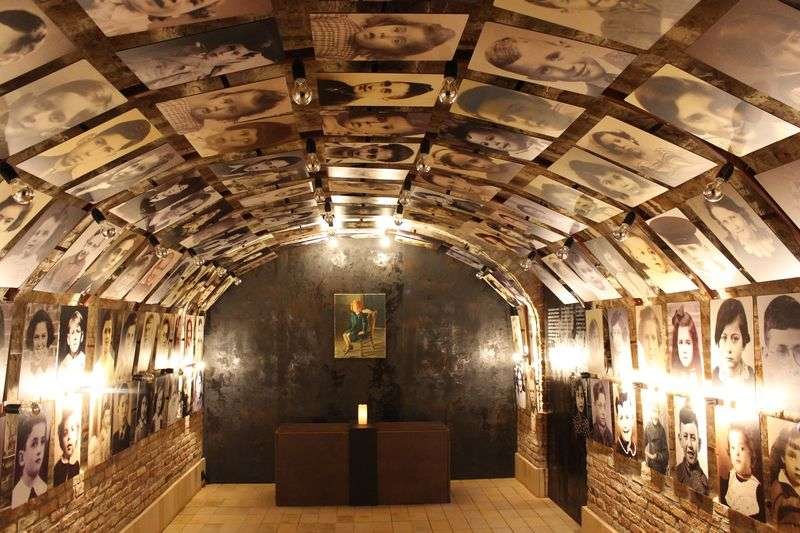
Kazerne Dossin Memorial
🧠 Fact: A poignant museum and memorial documenting the Holocaust and human rights, located in a former transit camp
💡 Tip: Allocate at least 2 hours to fully engage with the exhibits.
Info - A deeply moving museum and memorial, Kazerne Dossin tells the harrowing story of Belgian Jews and Roma deported during World War II. Through powerful exhibits, personal testimonies, and photos, it commemorates the victims and educates visitors on the dangers of intolerance and discrimination. The modern building stands beside the original barracks used during the Holocaust.
- 📍 Belgium , Mechelen
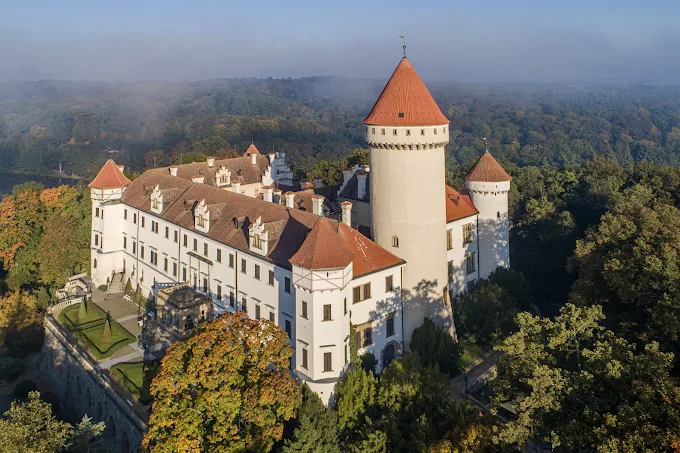
Konopiště Castle
🧠 Fact: Former residence of Archduke Franz Ferdinand.
💡 Tip: Don't miss the armory with its extensive collection of medieval weapons
Info - Konopiště Castle is famed as the final residence of Archduke Franz Ferdinand, whose assassination sparked World War I. Located near Benešov, this romantic Gothic Revival chateau boasts opulent interiors filled with hunting trophies, medieval weapons, and Renaissance art. Visitors can explore elegant drawing rooms, a historic chapel, and the famous armory, home to one of Europe’s largest private collections of weapons and armor. The castle’s serene gardens feature peacocks, a rose garden, and a tranquil lake. Easily accessible from Prague, Konopiště is both a historical landmark and a picturesque countryside escape.
- 📍 Czech Republic, Benešov
